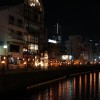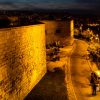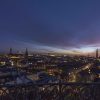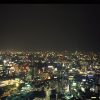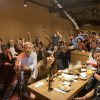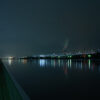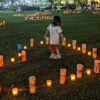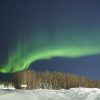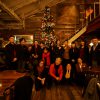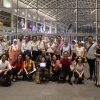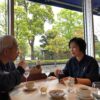Published:05. Dec 2015
・Activity 1/Lighting Survey:Hokuriku-Noto Peninsula(01-04/09/2015)
・Activity 2/Night Walk:Osaka(03/10/2015)
Lighting Survey in Hokuriku-Noto Peninsula
01-04 Sep. 2015 Sachiko Segawa + Yumi Honda
It was the first time for Lighting Detectives to survey Hokuriku area, Japan sea side –It became faster and easier to travel there since Hokuriku Shinkansen line stretched its service to Kanazawa. What kind of light symbolizes Kanazawa city, the heart of Hokuriku? What light is essential in the rural life? Those were what we tried to find out.
■Light to “Utilize” in nature
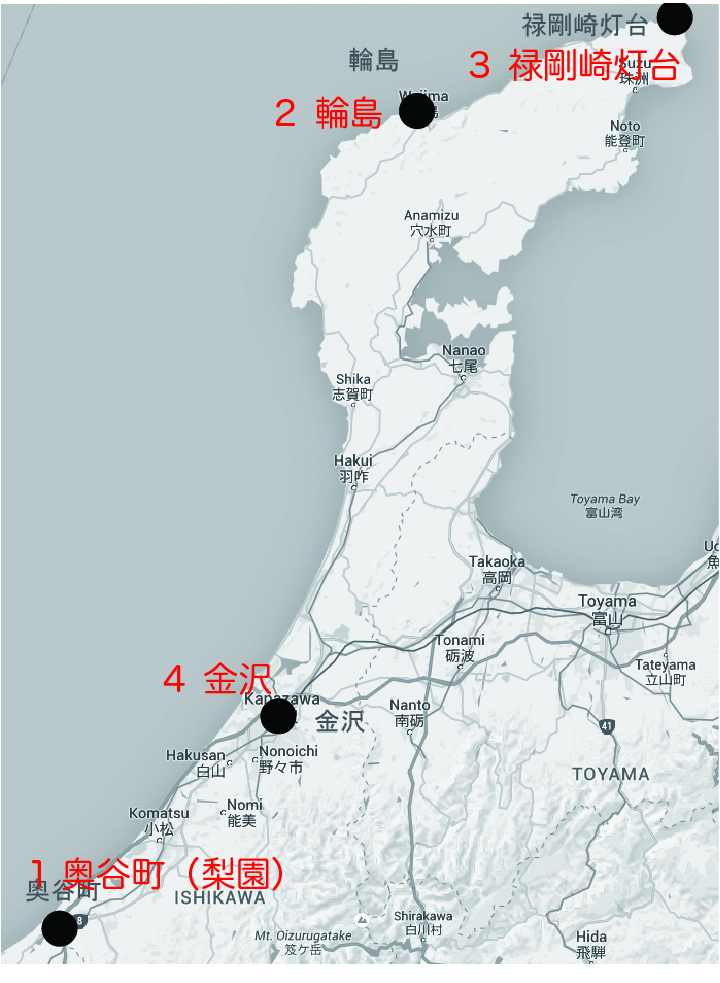
Went to the edge of Noto Peninsula where is apart from railroad, we returned to city of Kanazawa and did survey there.
Landed on Komatsu Airport, Ishikawa, in the rain. The reason we took the flight, but not a bullet train, was to visit a farm near the airport. Luckily our flight managed to arrive… as we heard earlier flight had to return to Tokyo due to the stormy weather. 20km drive on the messy road after the stormy rain brought us to the first destination: the pear farm. There were totally dark without street lightings around the farm, and the luxmeter was not able to detect any light. Walking down the private walkway, the pear farm appeared suddenly. Thousands of yellow fluorescent lights were juxtaposed over the farm, and it created a misty scenery after the rain. It also looked futuristic in a way, like night view at factory zone.
This farm in Okunoya-town grows organic pears. Instead, 1500 numbers of anti-moths special lightings are operated overnight during summer time. The special lamp is made of yellow-stained bulb with fluorescent pigment. Moths are tricked by the special bright yellow lamp, misreading it as daytime, and never fly to the farm.
The farmer looked curious when we told we visited there to see this particular light… seems lighting is not to entertain people but to utilize for daily life.

Yellow light is covered pear farm. It is surrounded by mountains and no other lighting reached this area.
■Pass the traditions –Festival lighting
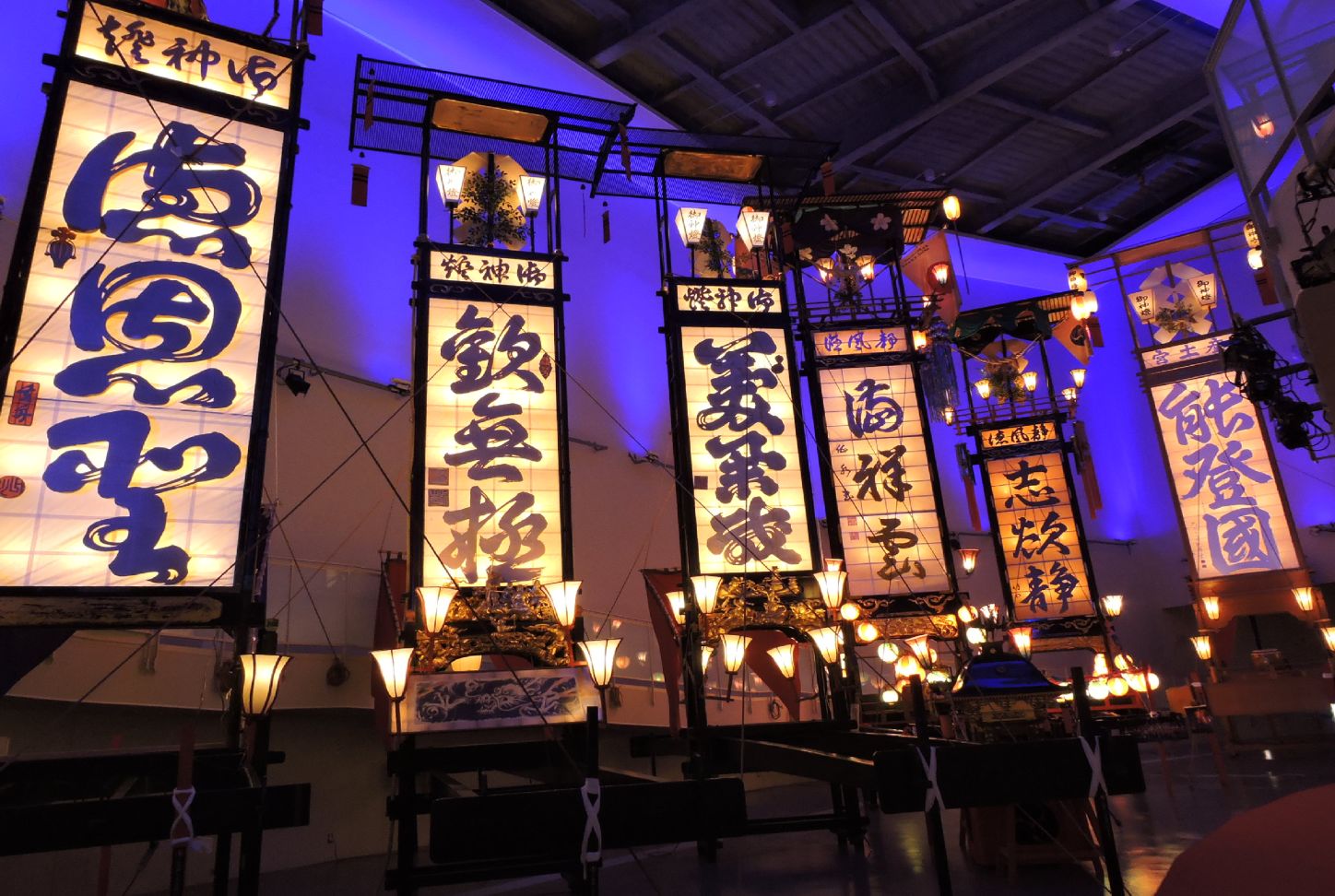
WAJIMA KIRIKO ART MUSEUM. Huge 10m Kiriko standing in the large space is astonishing.
The following day, we left early in the morning and headed to the end of Noto peninsula via Wajima. A festival carrying Kirikos (traditional huge lanterns) is famous everywhere in Noto peninsula. We stopped at Kiriko Art Museum in Wajima town to see the various Kirikos; hundreds-year-old ones to the latest ones. Kiriko is basically a painted and/or calligraphed 10 m high rectangular lantern decorated with dolls and sculptures and it leads the Mikoshi parade in the festival. The light comes through Washi (Japanese paper) glows in the dark gently. Now electric light bulbs are mainly used, some imitating wavering flame, but it used to be candles before. It would have been more dreamy with real candle flames… we imagined.
■Variation of Natural Light
Next destination was Rokugo-saki, the point of Noto peninsula. What is special for this point is that you can see both sunrise and sunset from/to the ocean. It was overcast when we reached, but we spent time there to see the transition of evening sky. There were no artificial light surrounding us, and it enabled us to focus on the sequence of sunset. When the night falls, the only light left was from the light house. The light thrown towards the ocean was simply functional and powerful; it’s not there to light up or to symbolize something.
Walking down to the village, we saw no local people and the street was unlit. For us, having lived in an urban city, the daily life cycle and the evening darkness in this village was something new to experience.

At dusk, we see the color change of the sky through clouds.
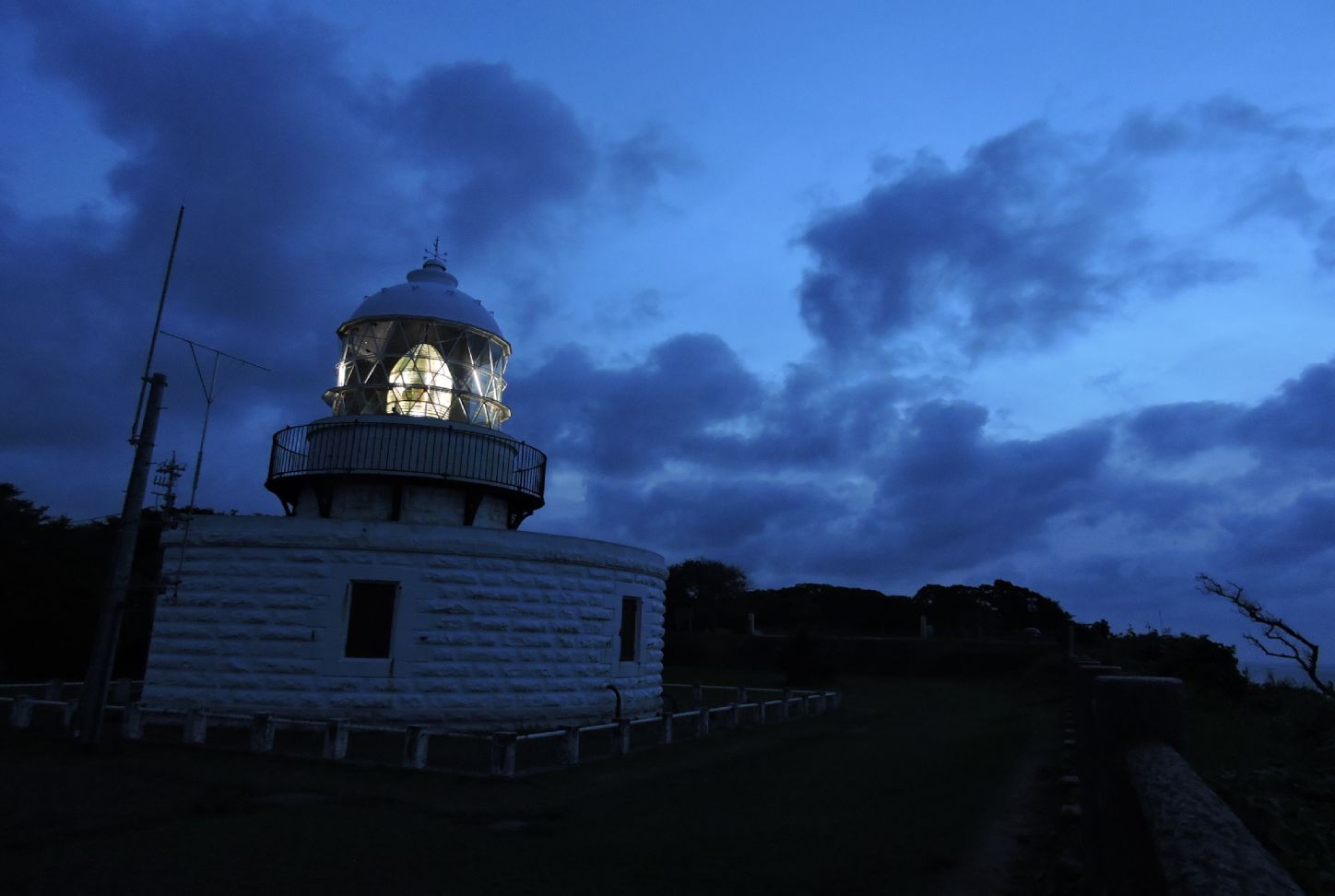
Usually it rotates the lens to flash the light, but the Rukuzaki lighthouse is a rare mechanism that rotates the shielding plate.
■Light to Welcome People in Castle Town
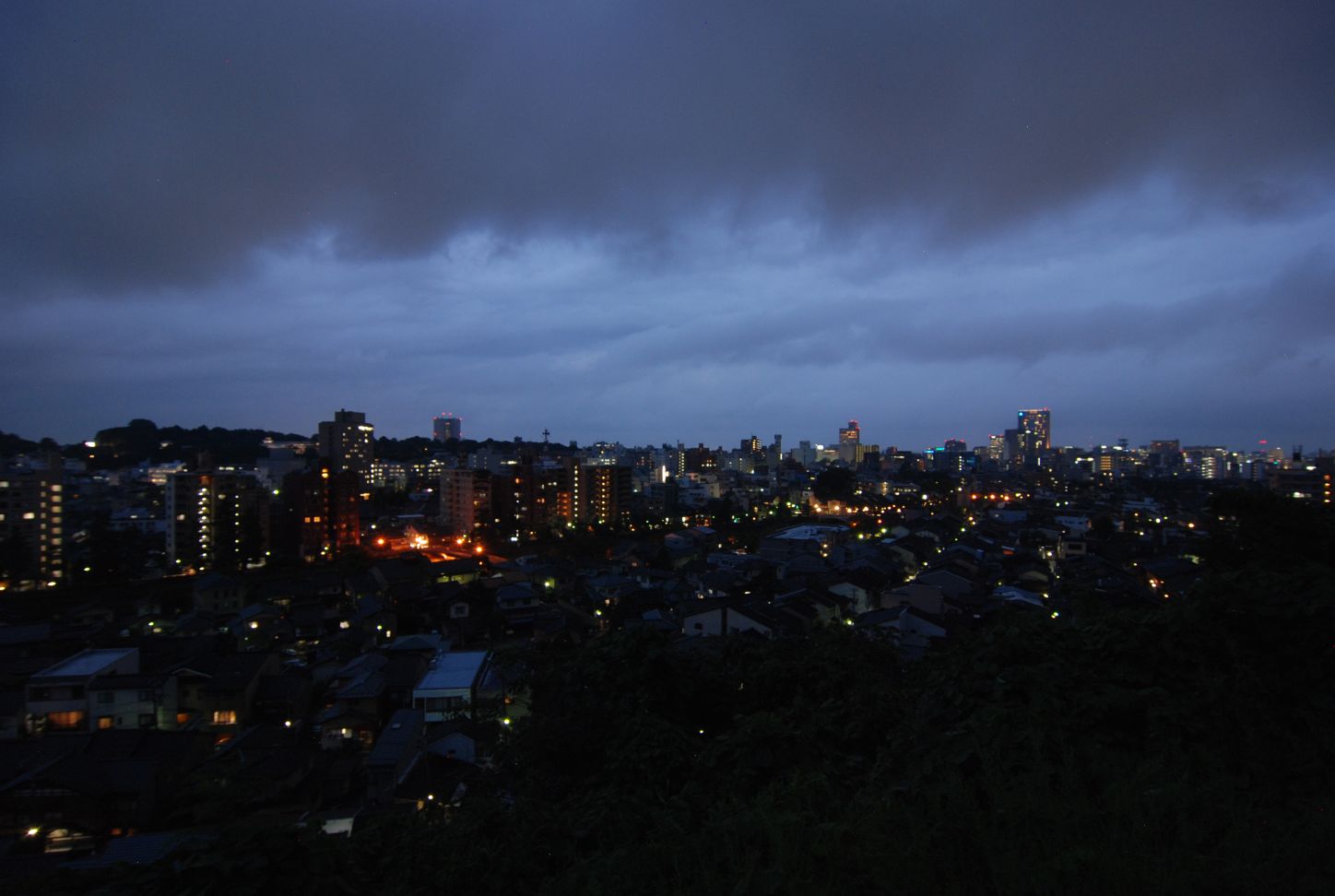
Looking down to Kanazawa city at sunset. The low-rise place on the left is the Kanazawa Castle ruins, and you can see the castle wall lighted up in the shade of the black forest.The area with many high buildings on the right is in front of Kanazawa station, and the dark area in front is Chaya-Machi.The orange color of the sodium lamp on the bridge is conspicuous.
Day 3, we had a survey on Kanazawa city, the core city in this area since mid-century. Our focus was to find out how lighting contributes to characterize Kanazawa, which is a mixture of historical and modern architectures and landscapes.
Looking over the city, the row of Kawara (Japanese tile) roofs in black made Chaya-machi (old town) look dimer. Warm street lighting on the bridge and along Chaya-machi looked prominent among the white street lights around the city. Aside to street light, we expected the wall uplight to Kanazawa Castle would be eye-catching from far, but it was not.
■Akari in Chaya-machi
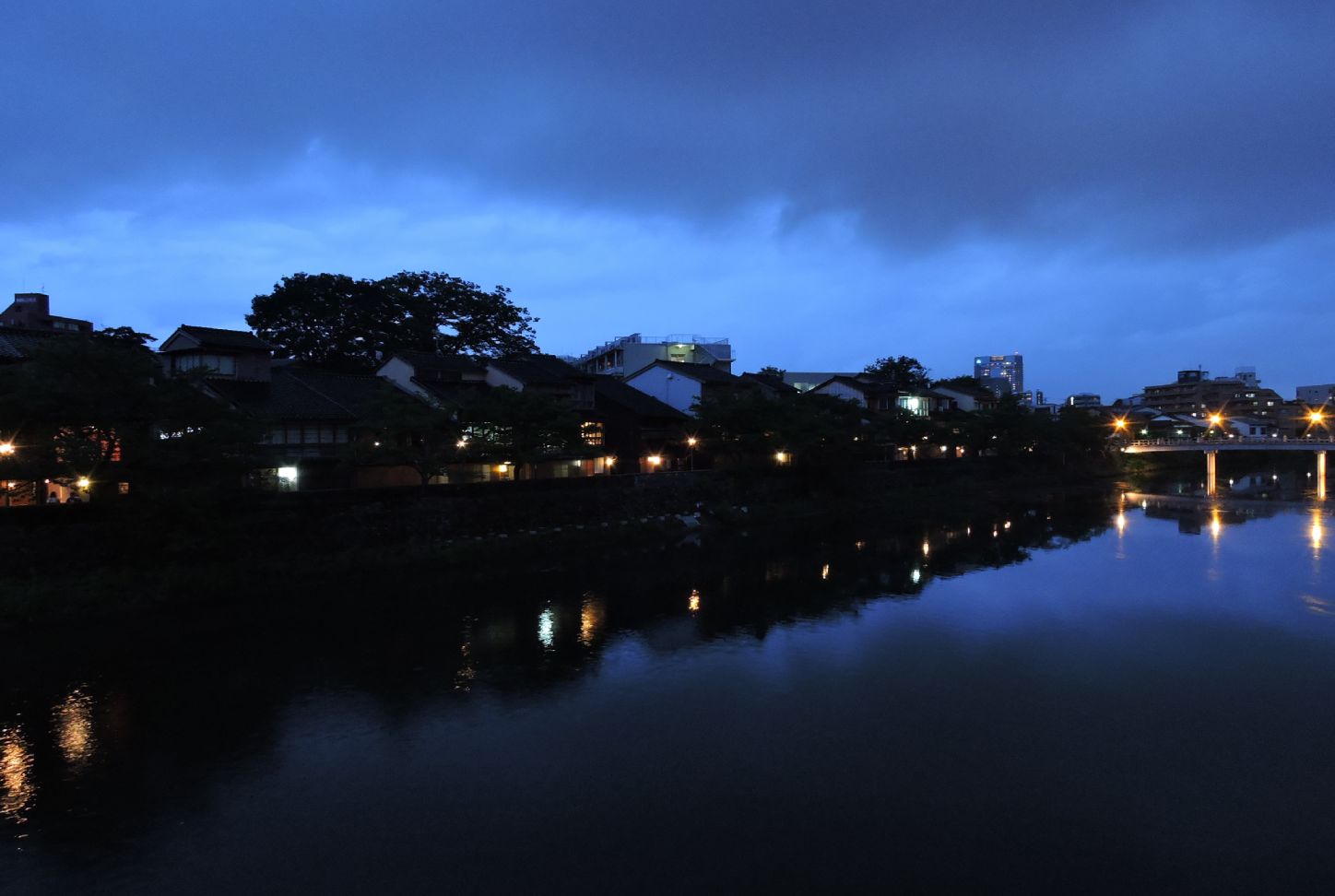
Looking from Asano River Bridge toward Kazuemachi Chaya
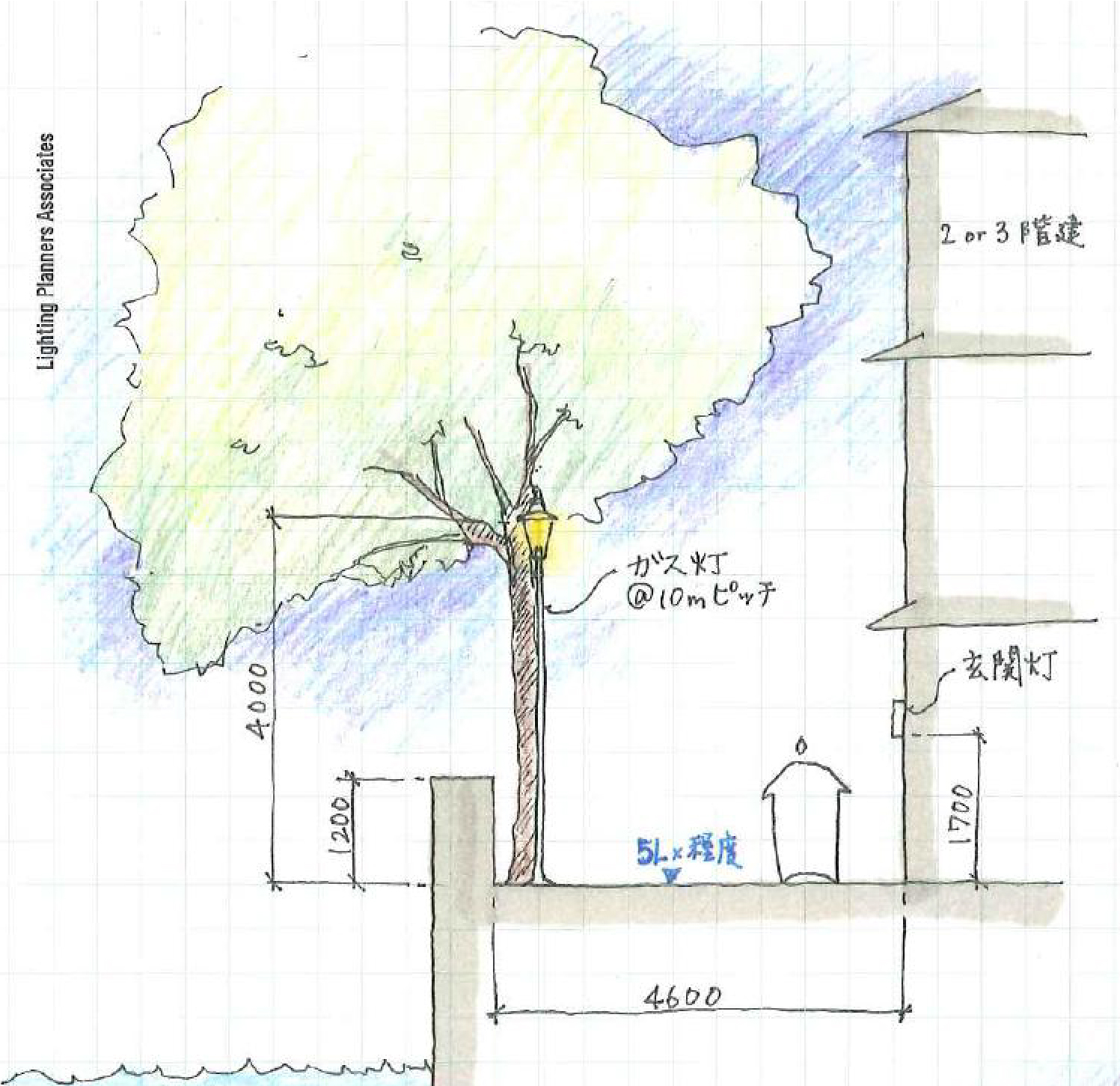
Sketch of Kazuemachi Chaya
We visited two main old towns besides Asano River. Retails dominated on Higashi-Chaya side, and it created no spilled interior light through timber slats sliding doors as those shops closed before dark. Instead, street gas lamps, were turned on at 5pm, attracted tourists to click photos.
There are mainly restaurants on Kazuemachi-Chaya side, and more visitors comes in the evening. Those bracket lights and lantern at the entries and lanterns behind timber slats doors creats traditional Japanese ambience.
Those gas lamps were allocated every 10m along the river side street. It was set relatively dim, were around 3-5lx at the centre of street, but was well-balanced with the ambient of old town. The gas lamp poles were in dark green or dark brown and well merged in the surrounding trees and buildings in the day time.
However, it was a bit disappointed to see that some buildings use white fluorescent lights inside, and some small streets use pole lights with LED in cooler colour temperature.

Light starts to be lit at dusk in Higashi Chaya
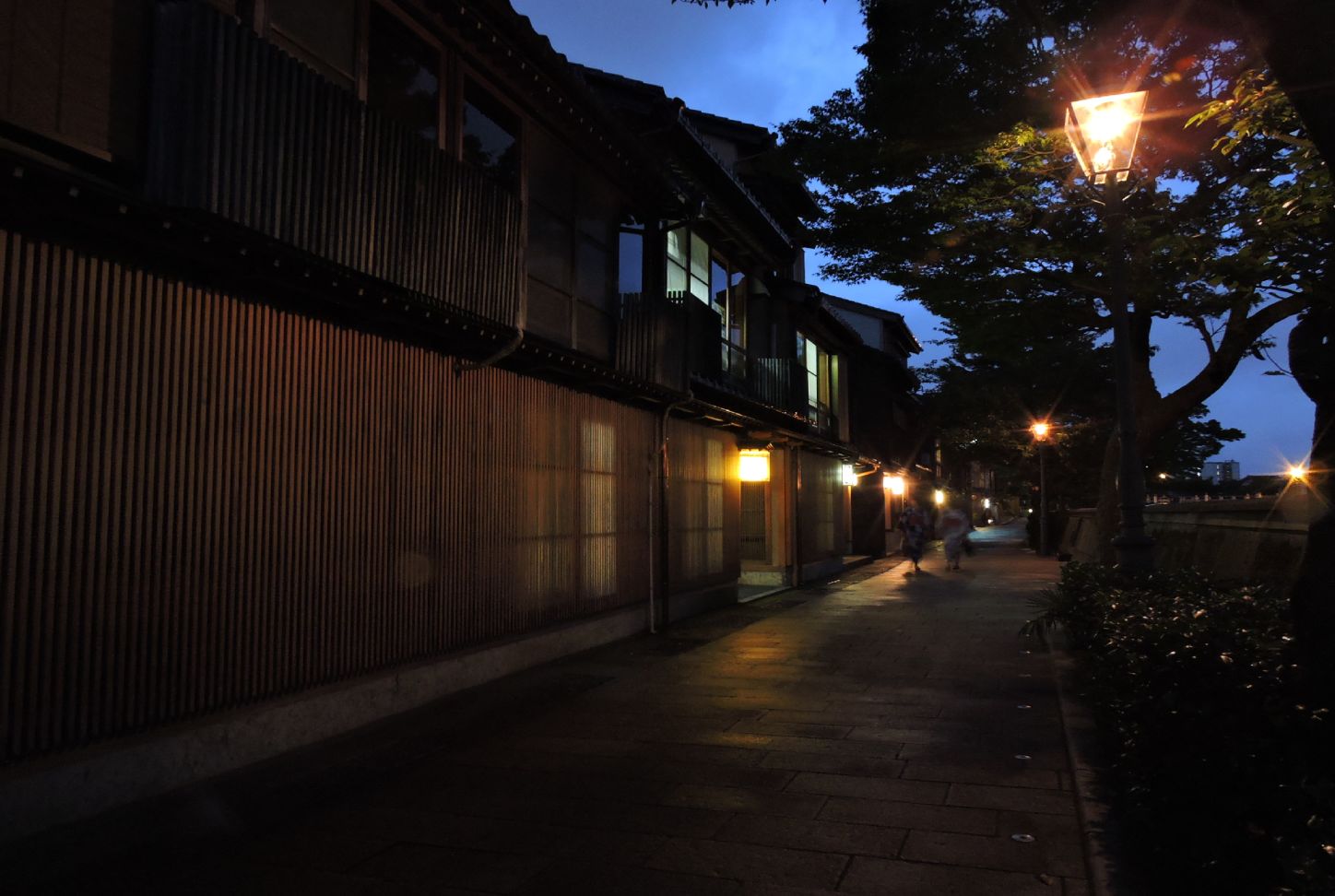
Along Asano River in Kazue Machi
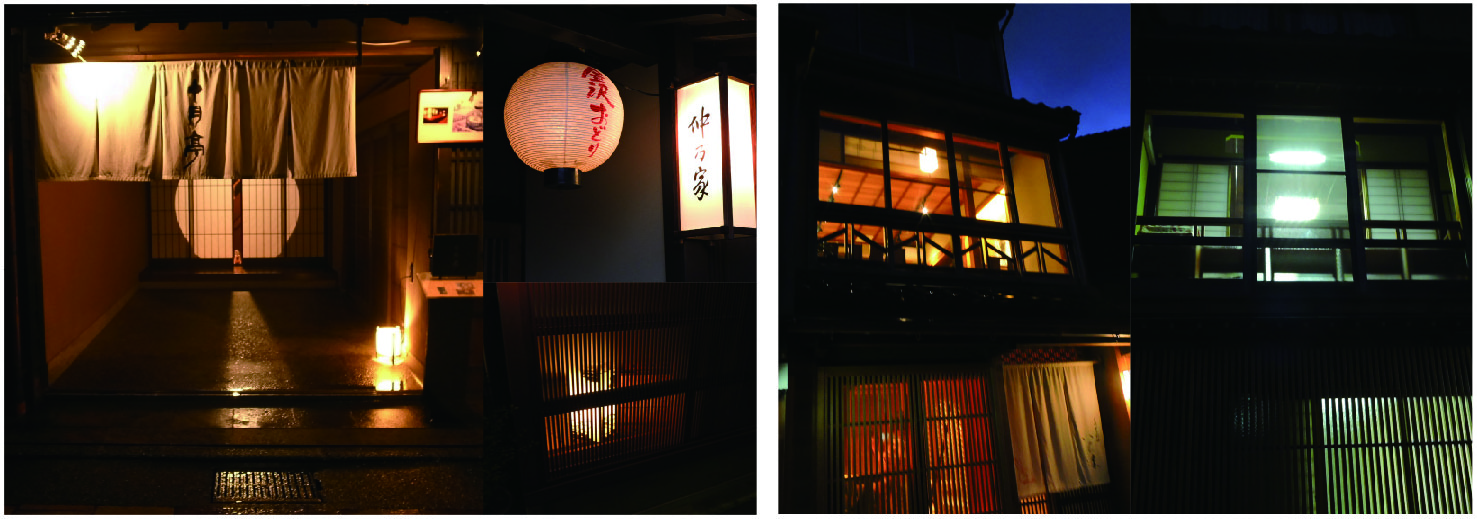
Japanese taste of Lighting. Most of buildings use the color of incandescent lamp but some of them use white fluorescent lamps and it was very disappointment that lams are seen from the street.
■Castle Walls with different expressions
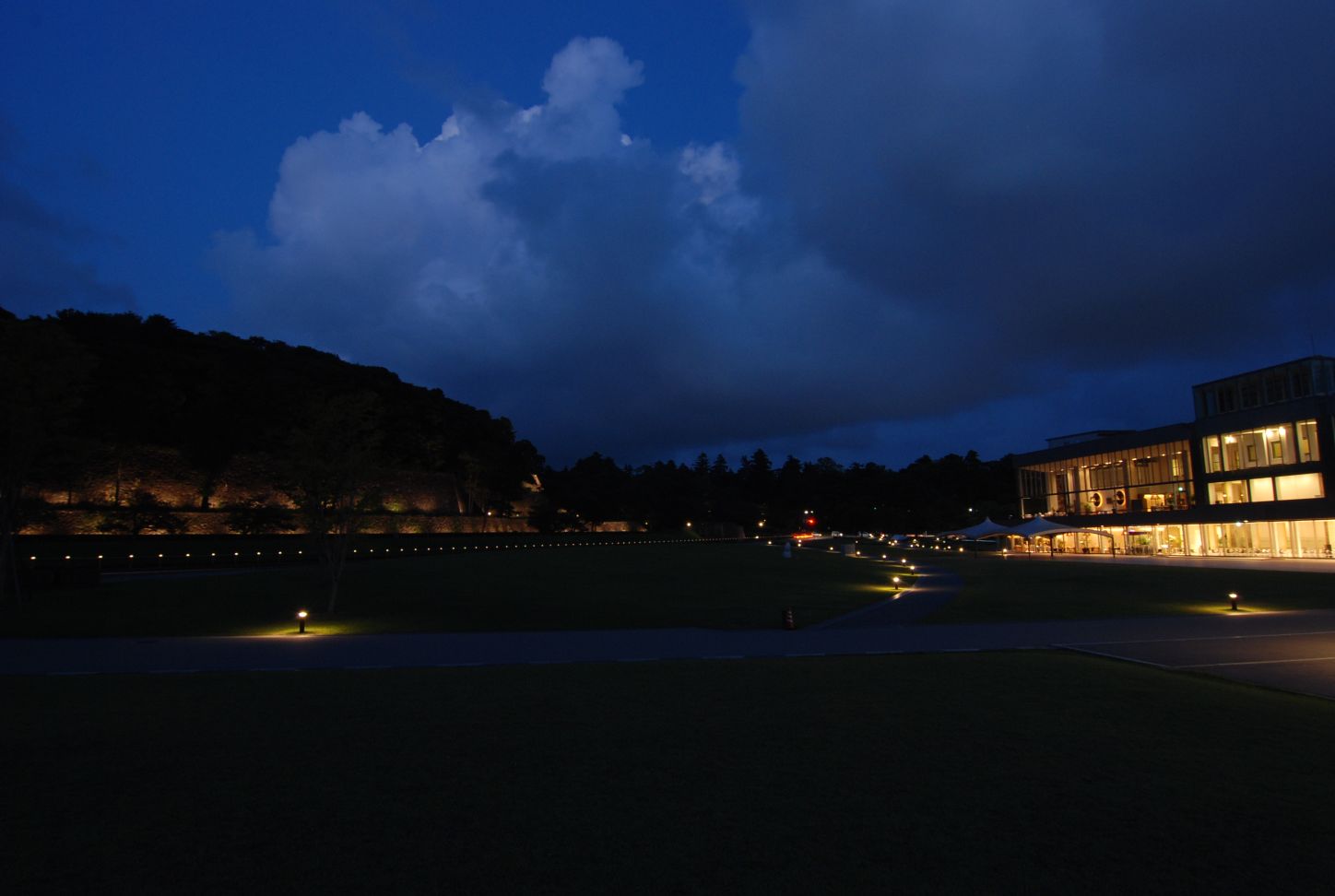
Contrast between old and new.The former prefectural office building is renovated to a modern building with glass. Comfortable dark is kept in the plaza between prefectural office building and castle where people can calmly watch the castle wall.
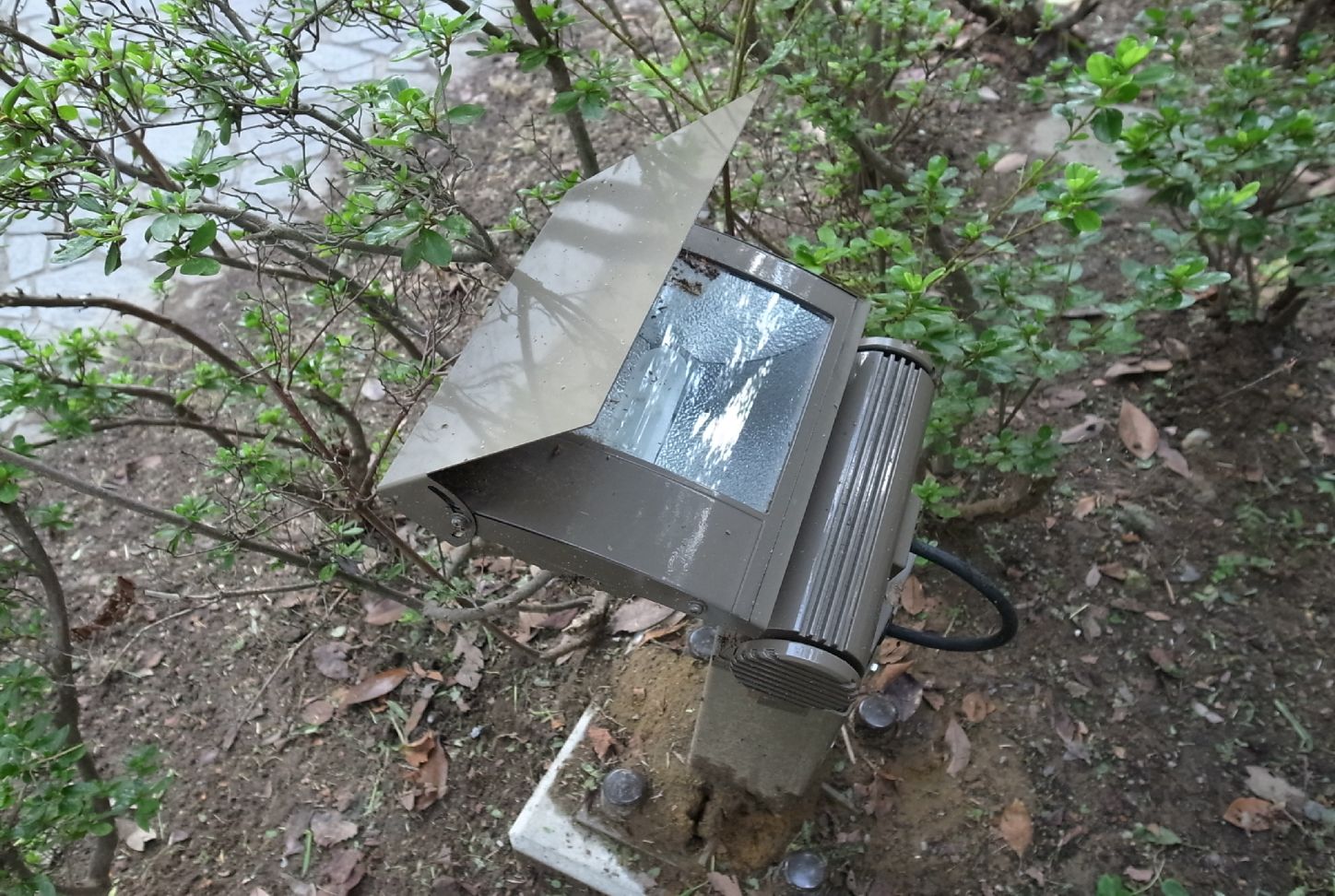
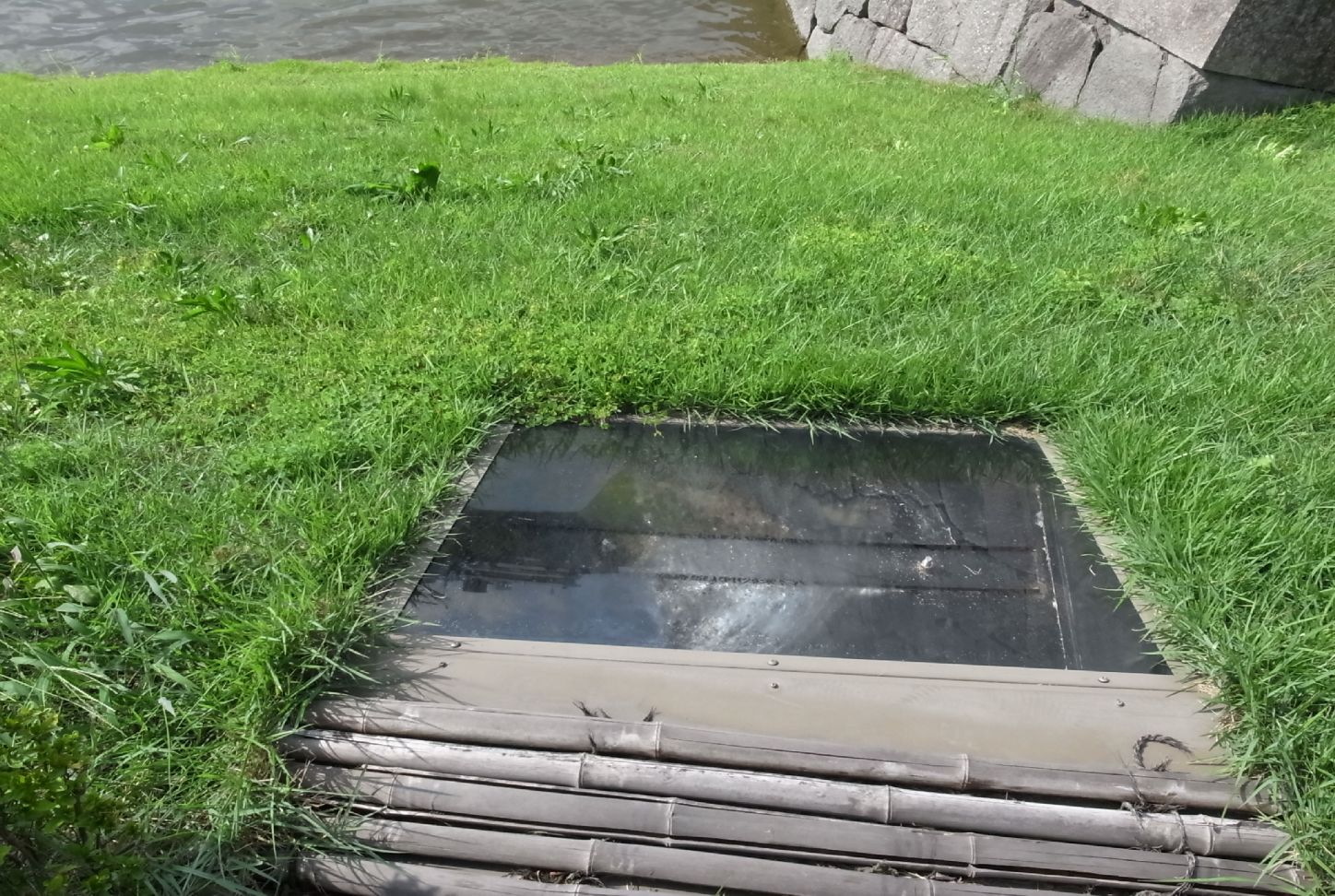
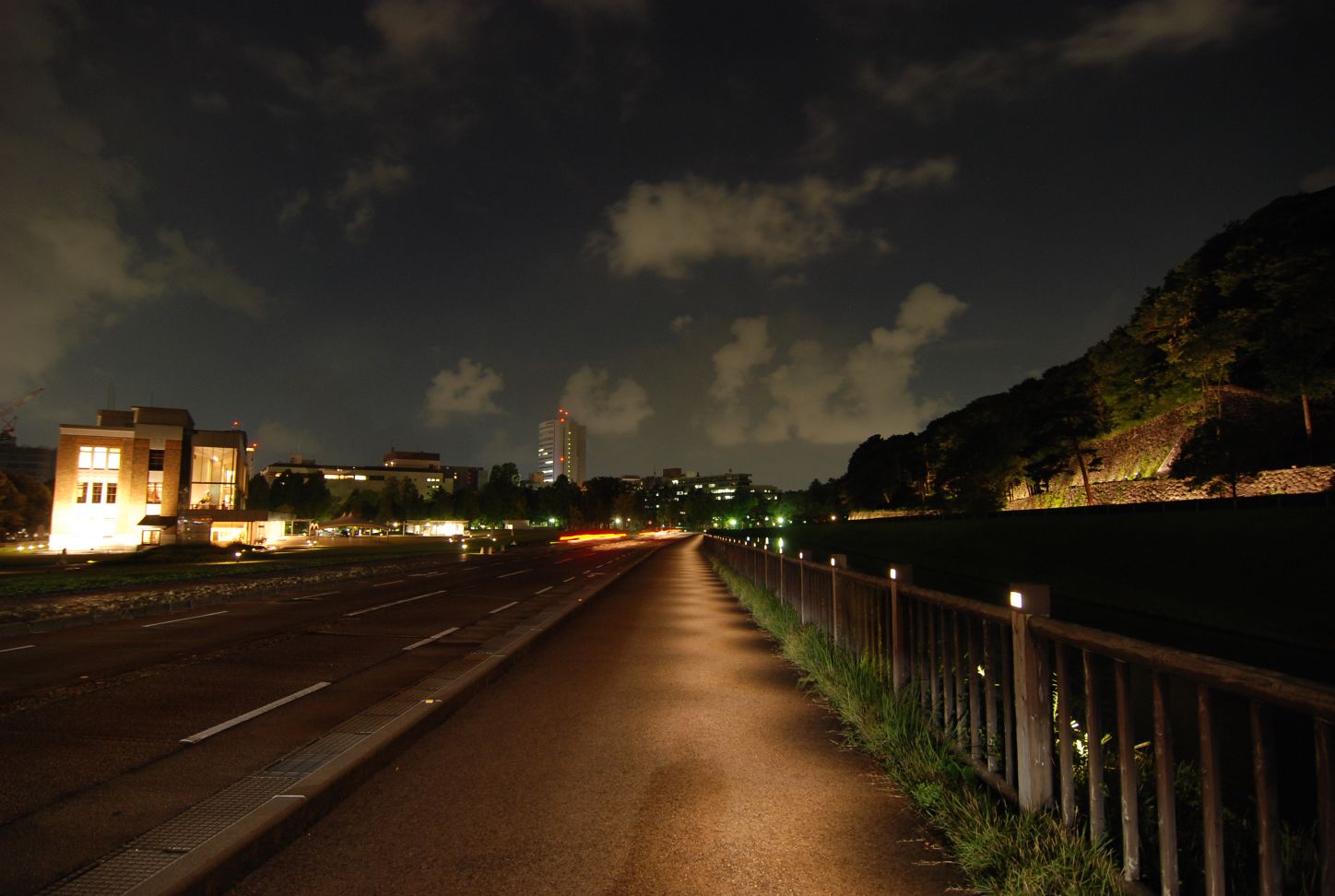
Anti-glare fixture
Central Kanazawa is organized as a park with cultural facilities such as museums. The castle walls look grand in the daytime, while it shows a different expression in the evening. Silhouettes of steps and trees against the gradient of wall uplight creates more depth and softness visually.
The uplighter for walls are metal halide (70W/3000K) luminaires with reflector on top to control the glare to pedestrians. One-side emitting bollard lights were allocated at 7m spacing along the walkway between Kanazawa Castle and Kenroku-en, and the illuminance was 2-10lx on the ground level. Nothing illuminated the trees along the walkway, but the vertical illuminance on the uplighted walls created an appropriate brightness.
There is a plaza in-between the castle and the former city hall. Functional light is integrated in the handrail along the edge of moat. Although the dots of light source were visible, the distribution of light was well-controlled with spread lens to illuminate only on the foot level. The landscape planning itself is overall well-designed in this area, the ups and downs of landscape blocks the view to the road naturally, for instance. It would be a nice place to hang out in a good weather, as the green area is also well-maintained.
The brightness in the park was moderate, and the colours of surrounding nature, stones, trees, lawn and warm lighting created a calm old town scenery. On the other hand, the adjacent downtown area attracts people with full of colourful and bright light.
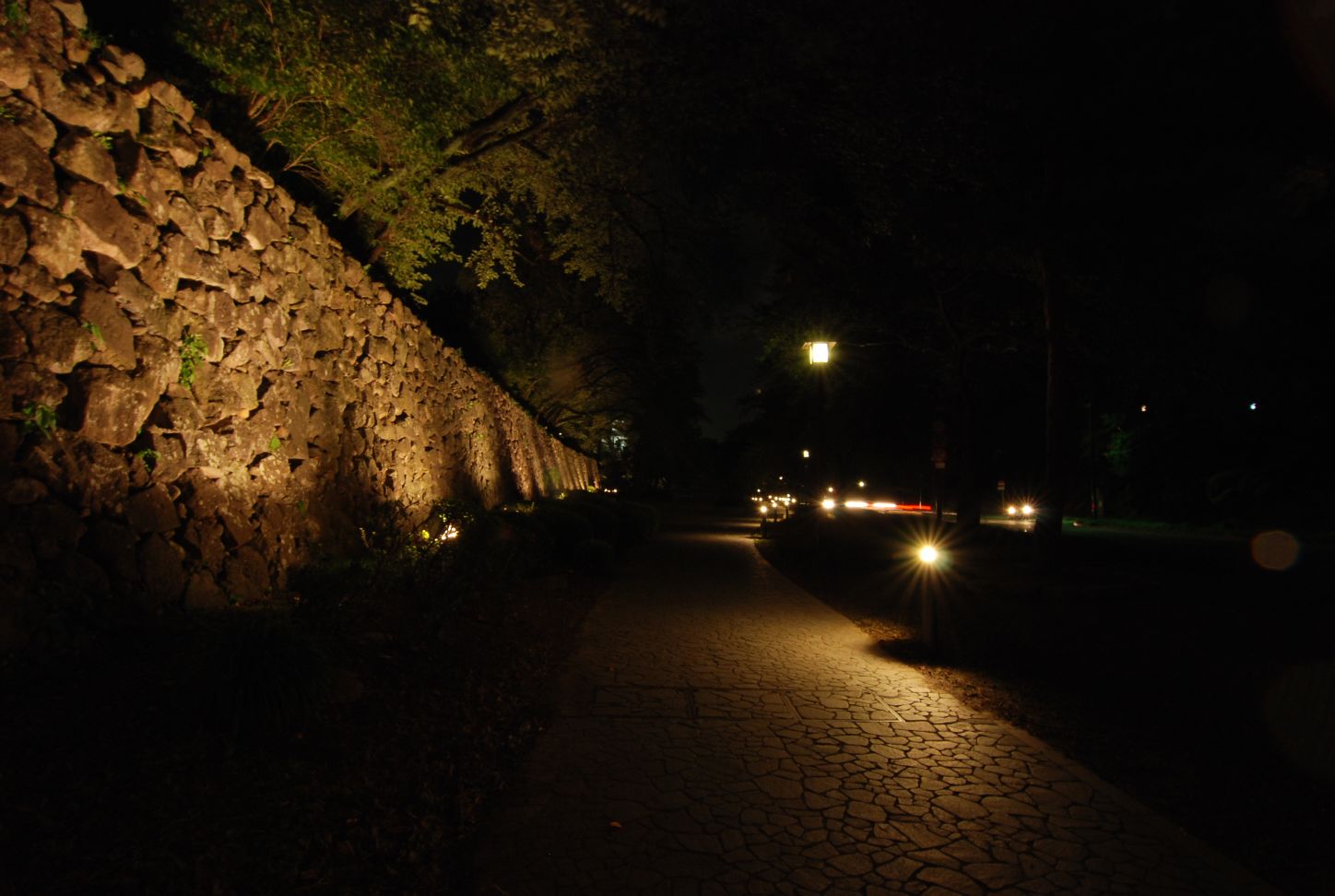
Sidewalk at Hyakkenbori street passing between Kanazawa castle and Kenrokuen. The luminance of wall upright is fair, but the bollards on sidewalk are dazzling.
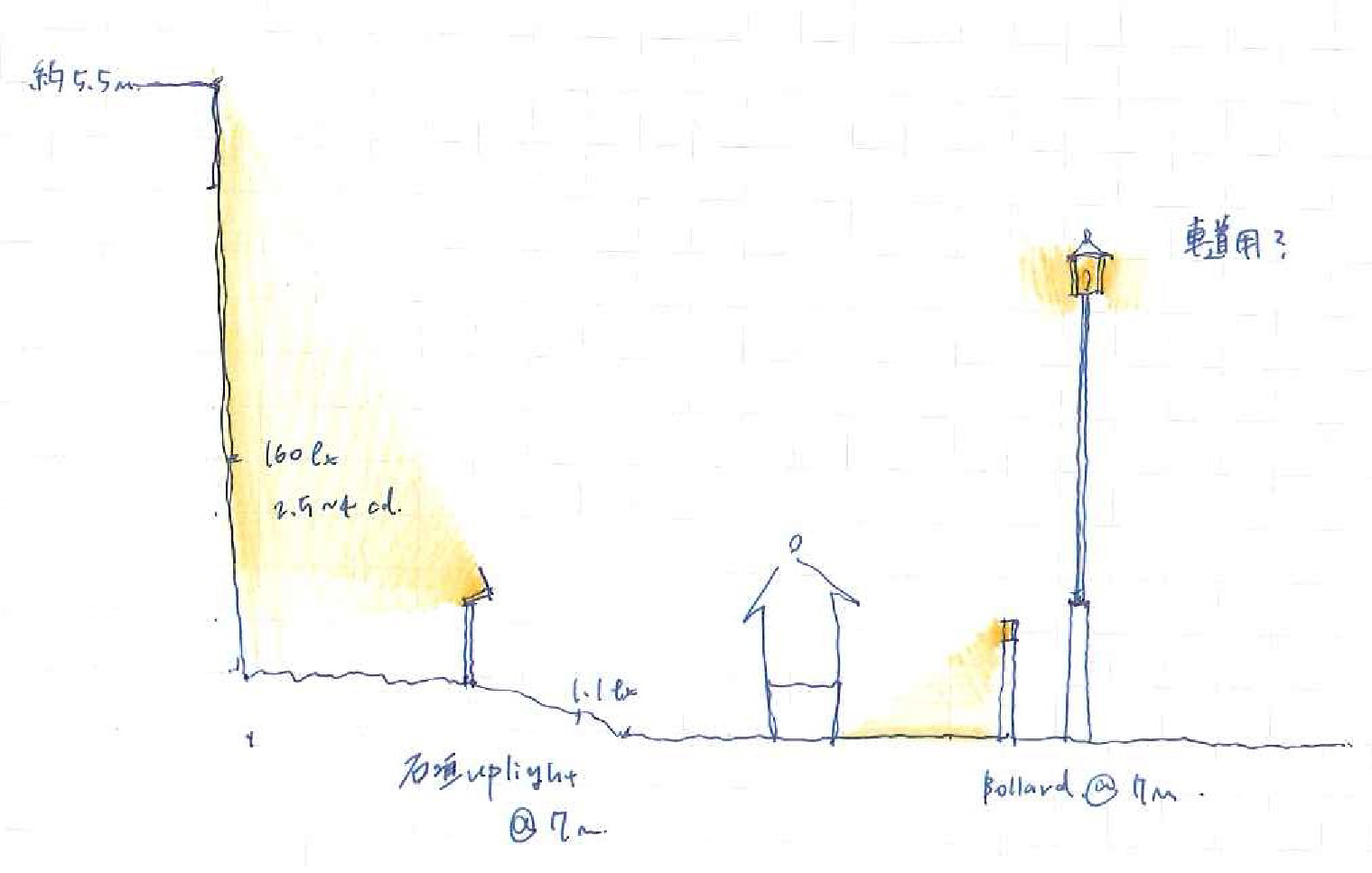
Cross section sketch of Hyakkenbori street。 There are a number of lighting elements.
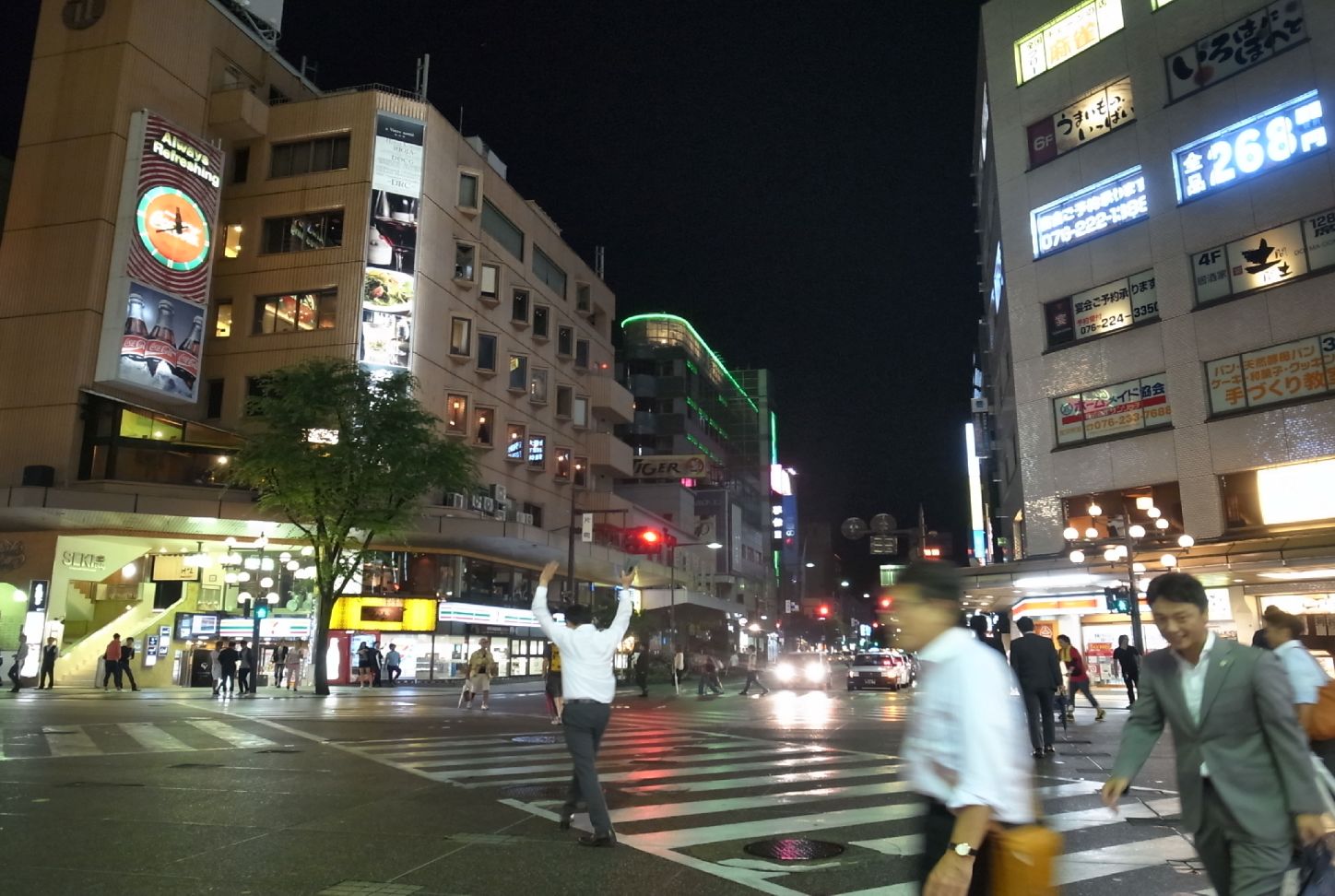
Behind of calm lighting around castle ruin, light is overflowed in downtown area.
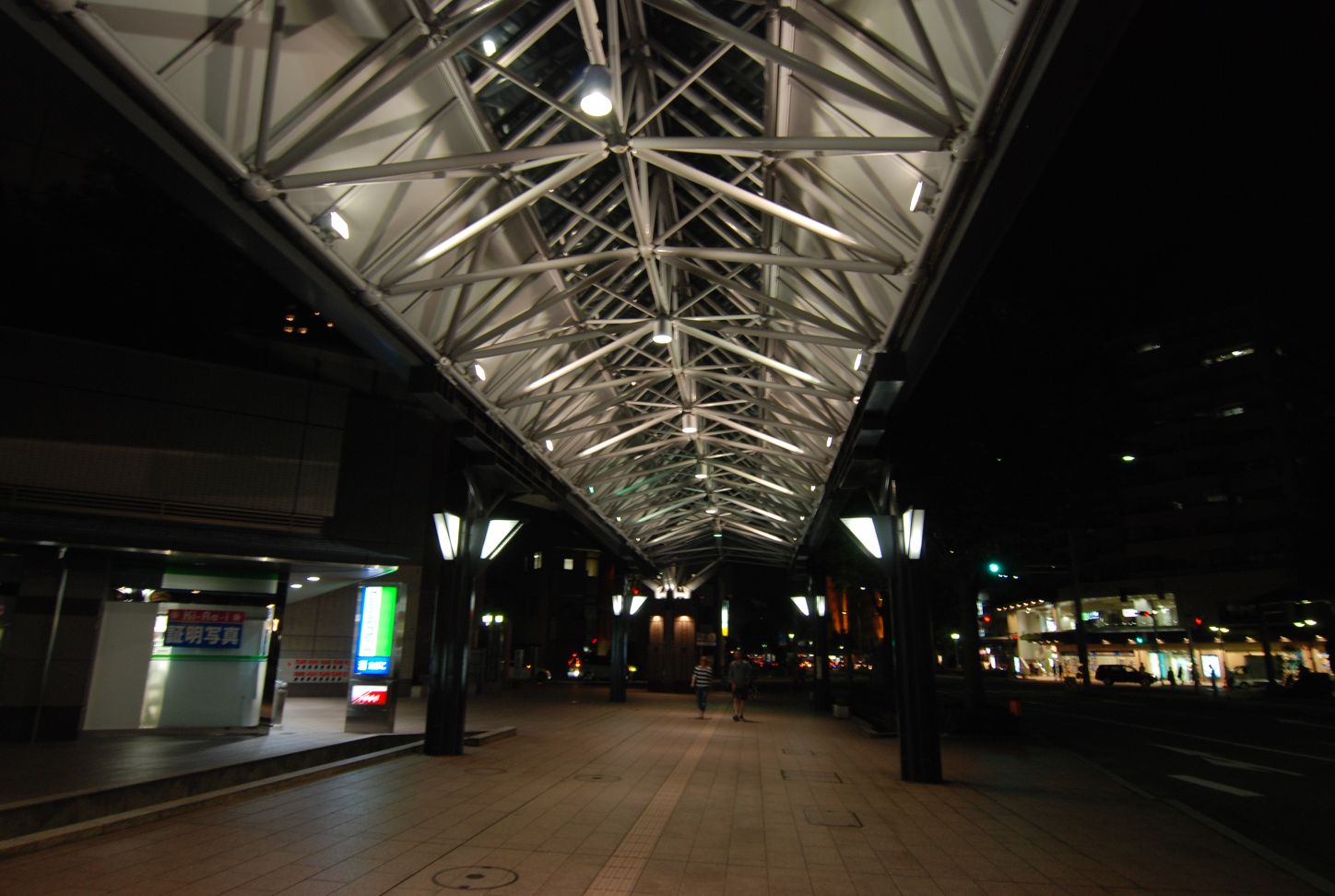
Because of rainy climate, many arcade can be seen in the town.
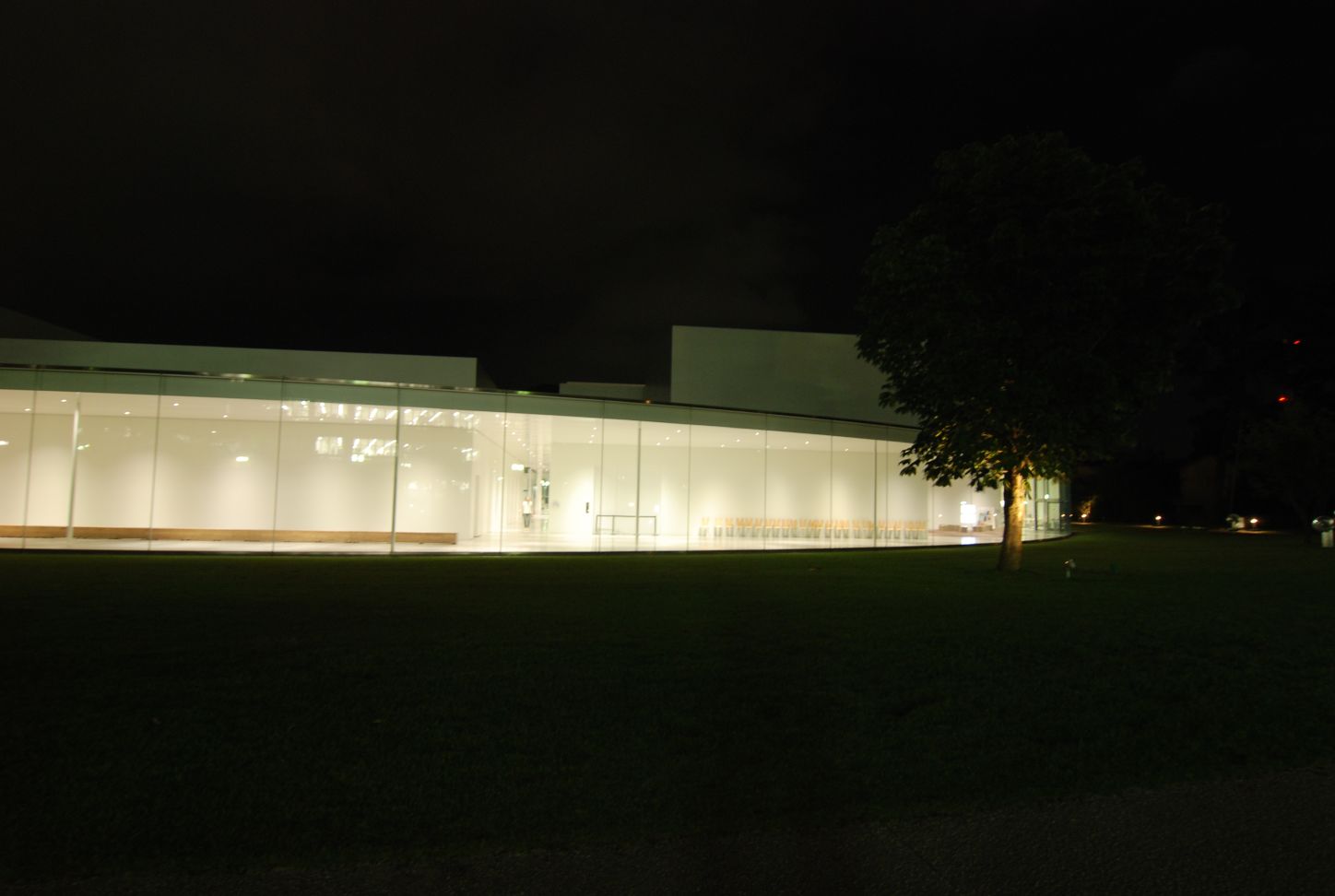
Night view of the 21st Century Museum of Contemporary Art, Kanazawa. It glows gently.
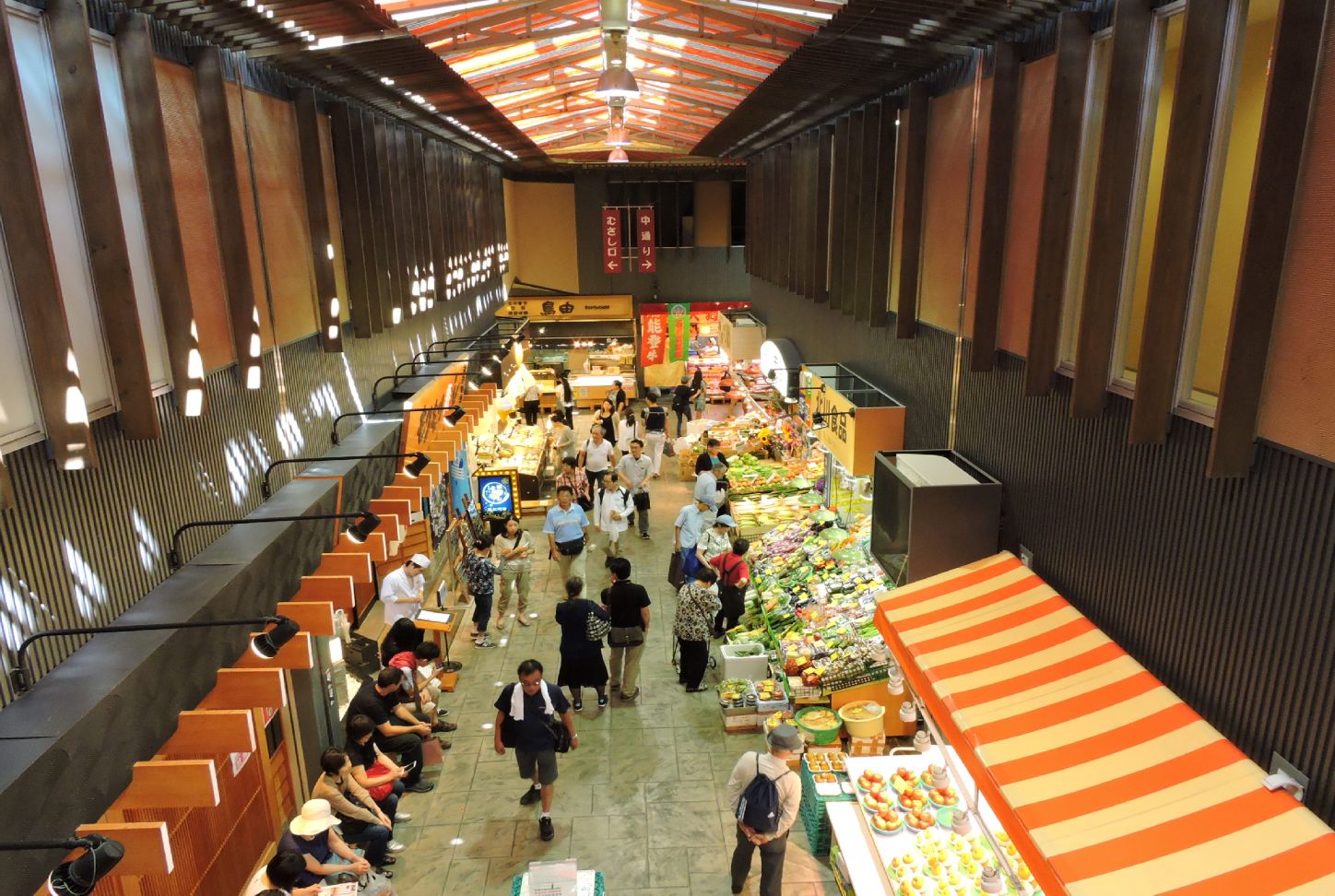
Arcade at Ohmicho market
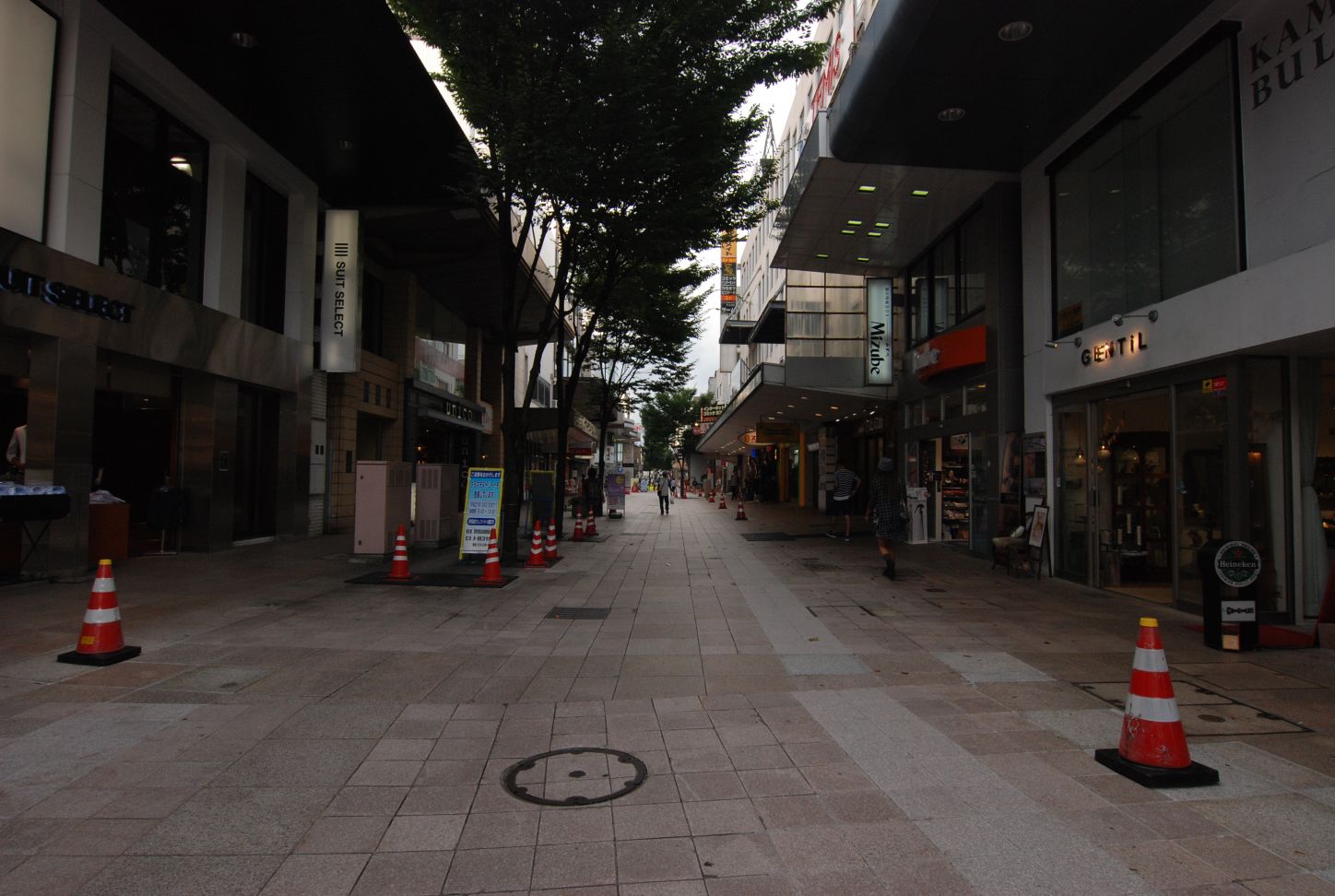
There is no pole light in new Tatemachi shopping area. The lighting from the eaves protruding to the height of about 3 floor of the store work as base lighting. (Photo was taken during the day)
■Renovated Train station and the Hospitality in New Bullet Train
Tsuzumi-mon (a big red gate) welcomes passengers to Kanazawa station, which is renovated in 2015 with the opening of the Hokuriku Shinkansen’s extension. A dome named “Motenashi Dome” stands behind the gate. This glass dome reflects a spirit of hospitality; welcome the passengers by offering a big umbrella to the city with lots of rain and snow.
Both Tsuzimi-mon and Motenashi Dome get lighted up in the evening, and the light up look milder than those seen in photographs.
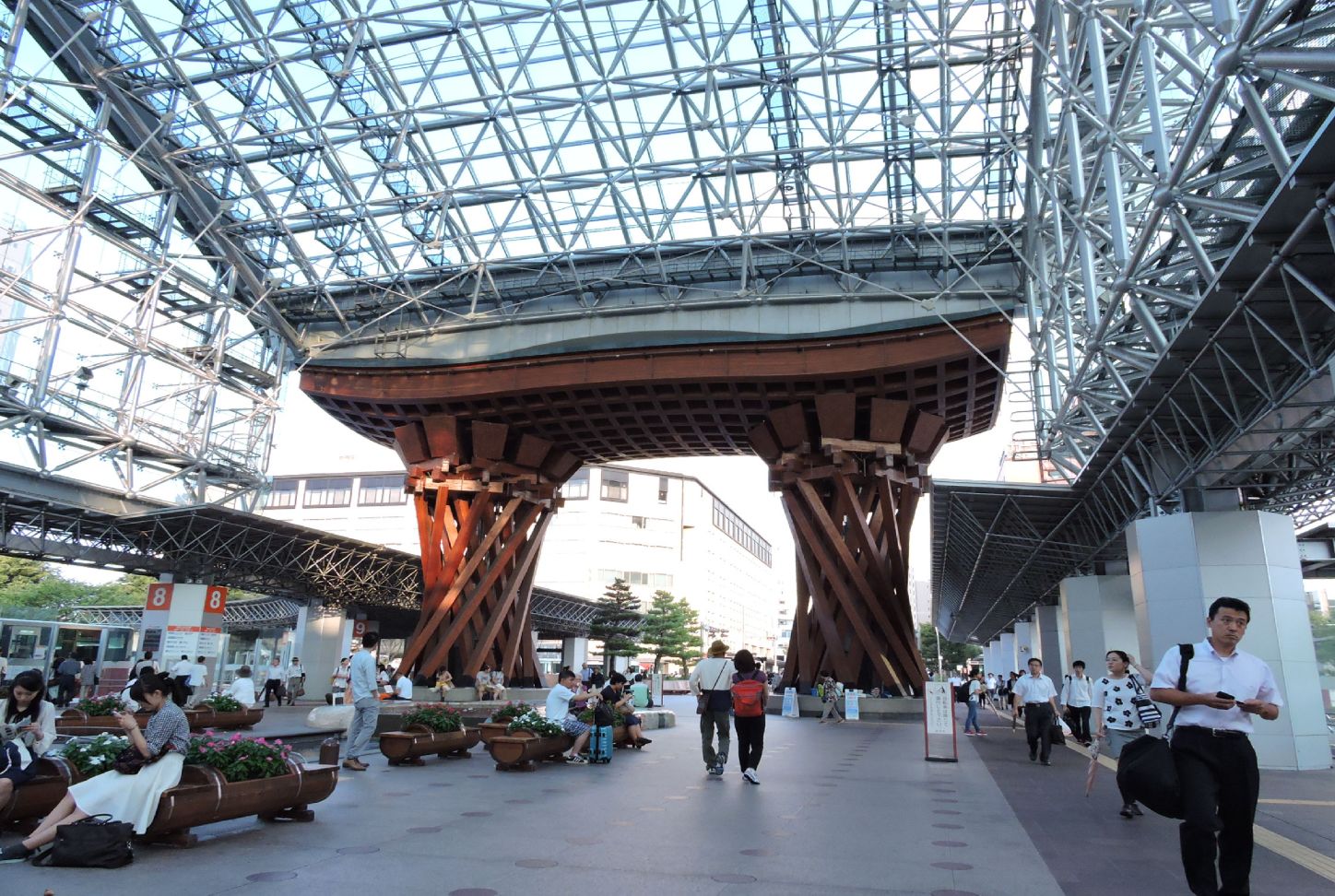
Motenashi Dome during the day
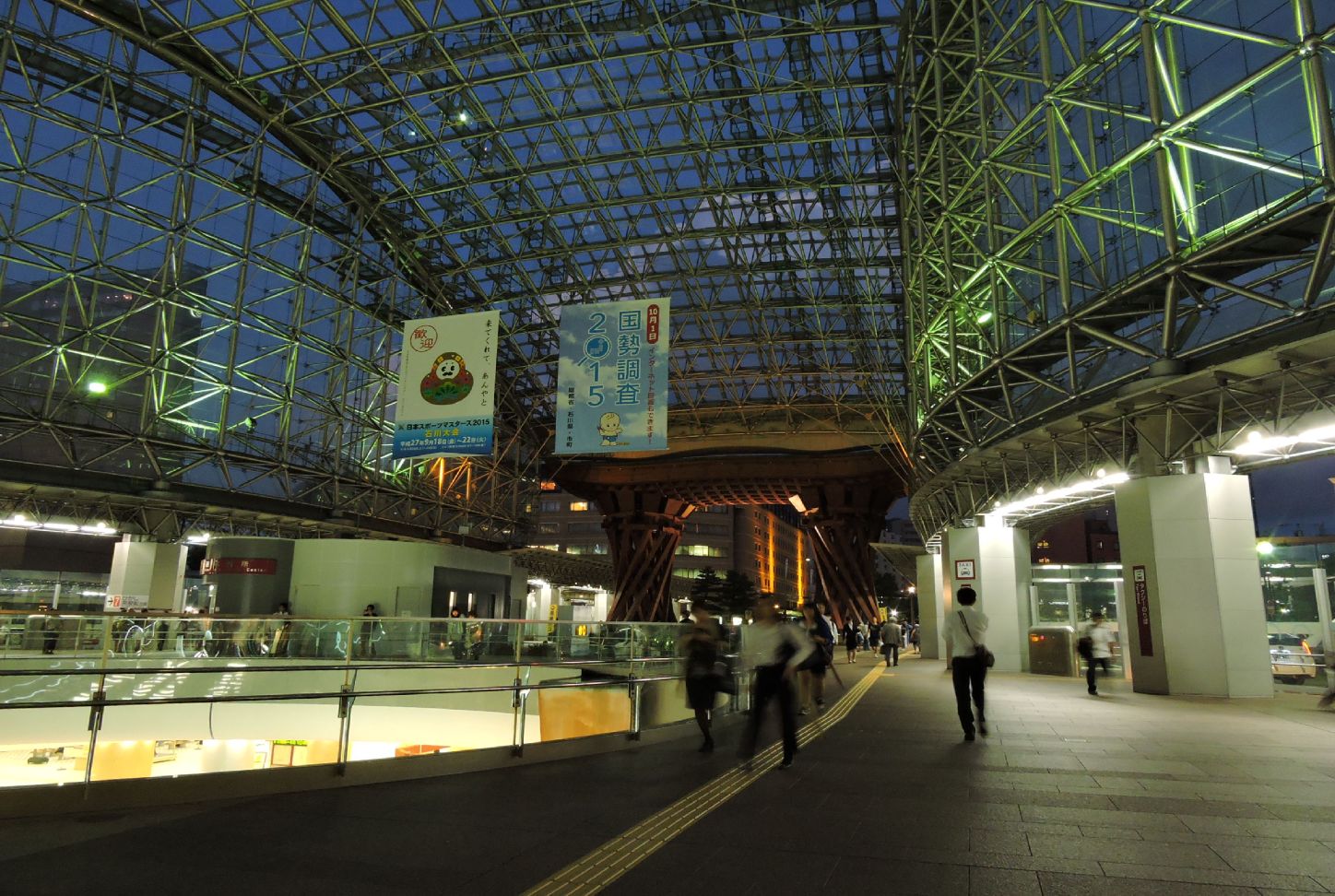
Motenashi Dome at night
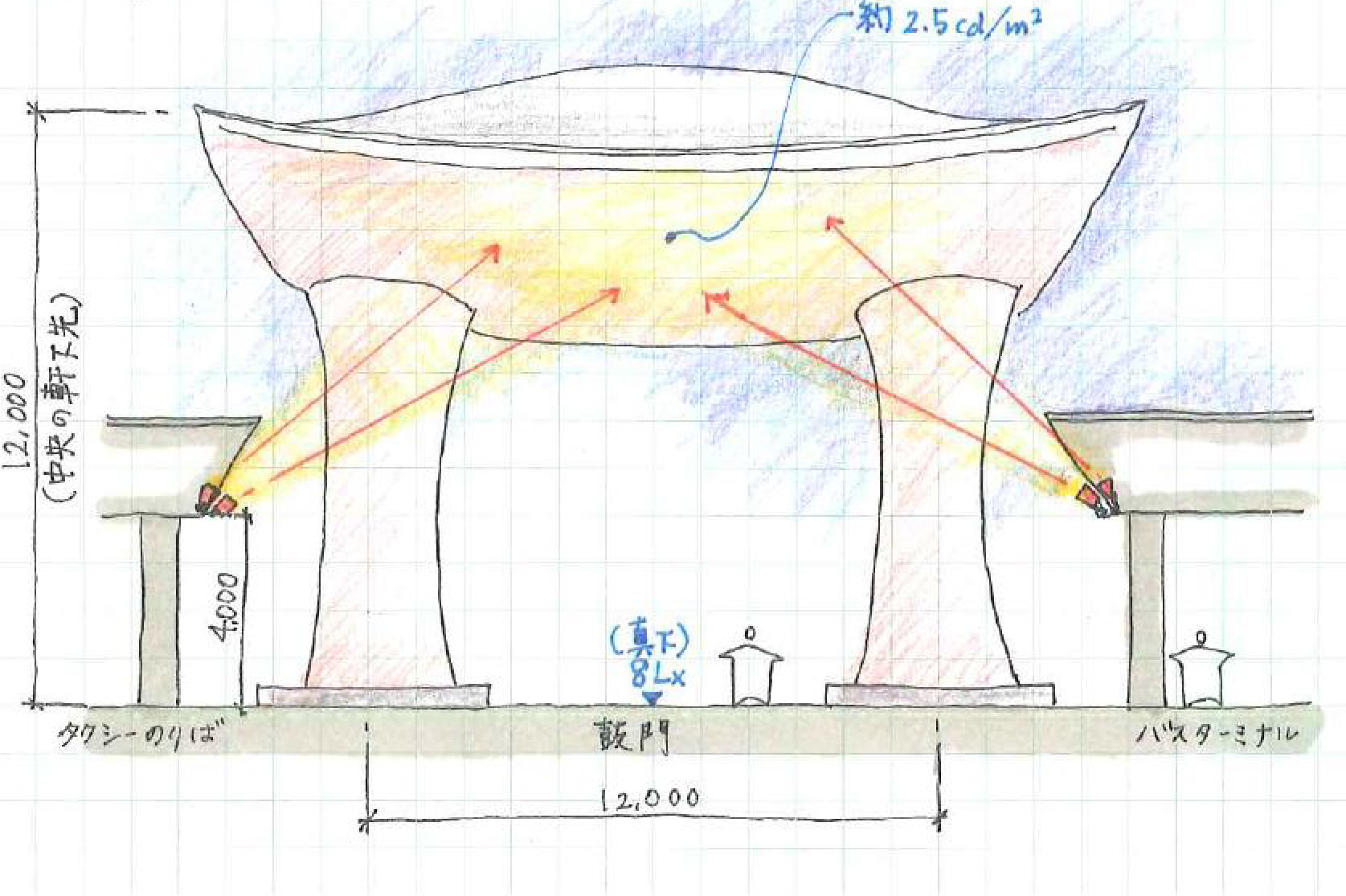
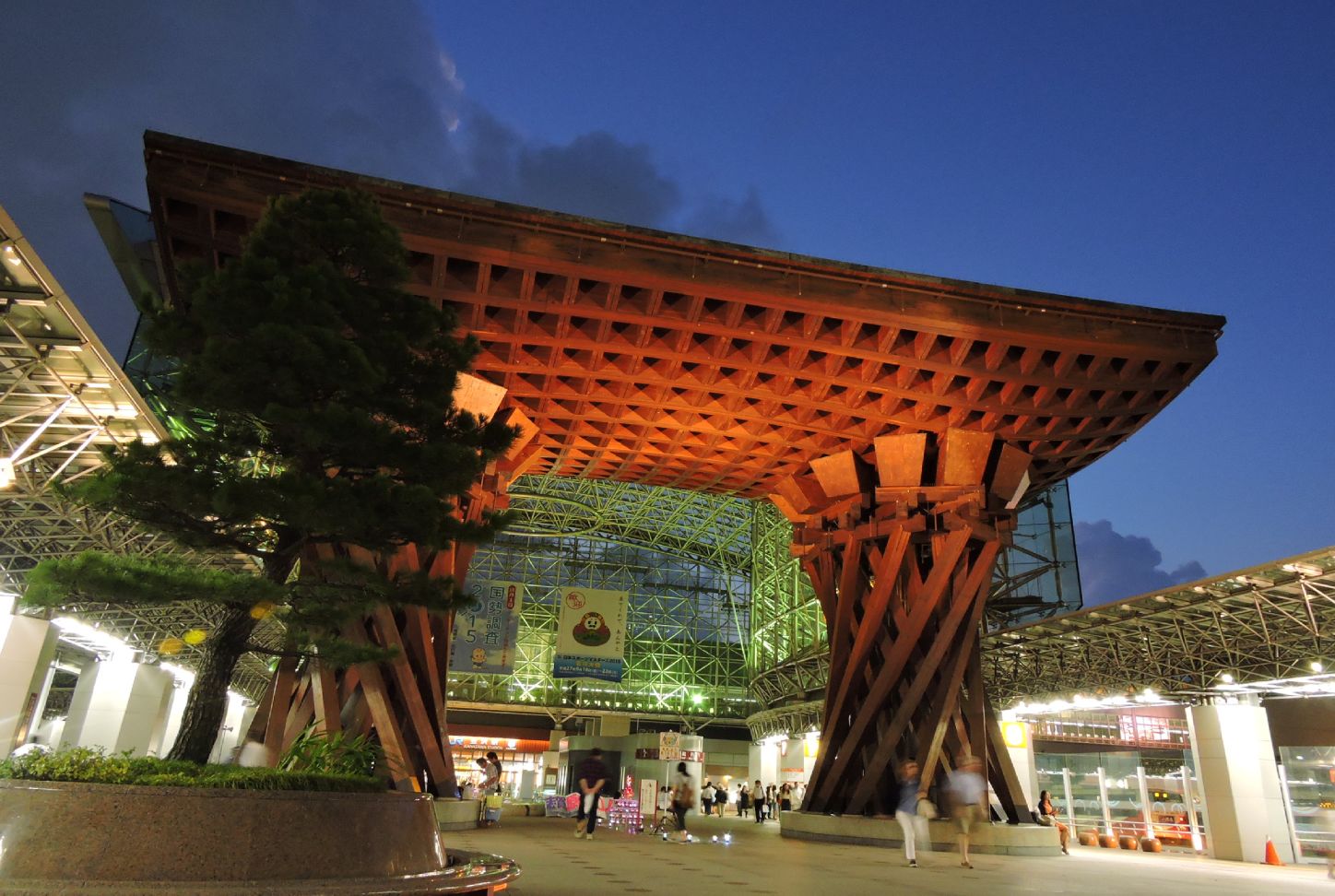
Icon of Kanazawa Station, Tsuzumi Gate, let from both sides.
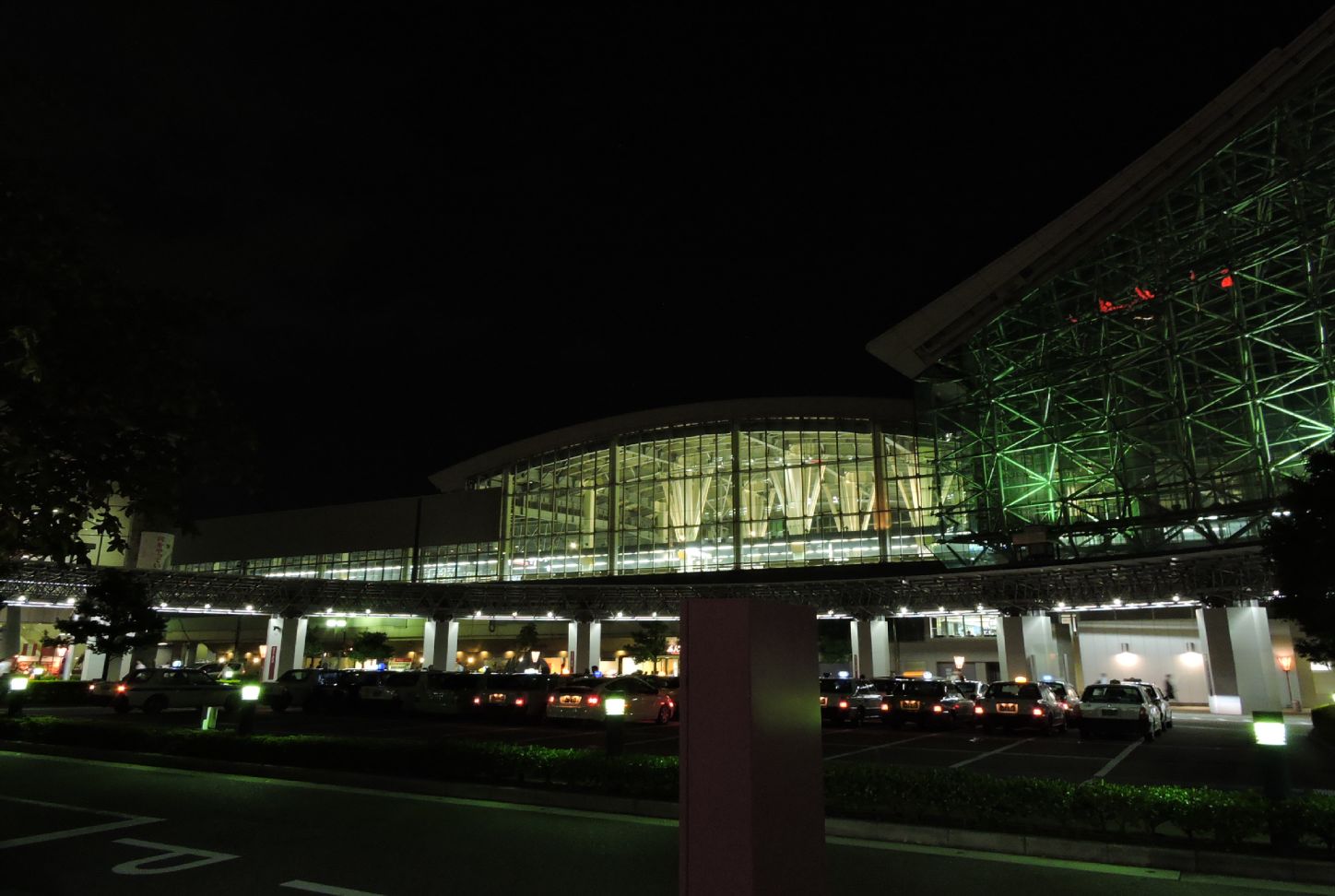
The white and bright band of the platform stands out.
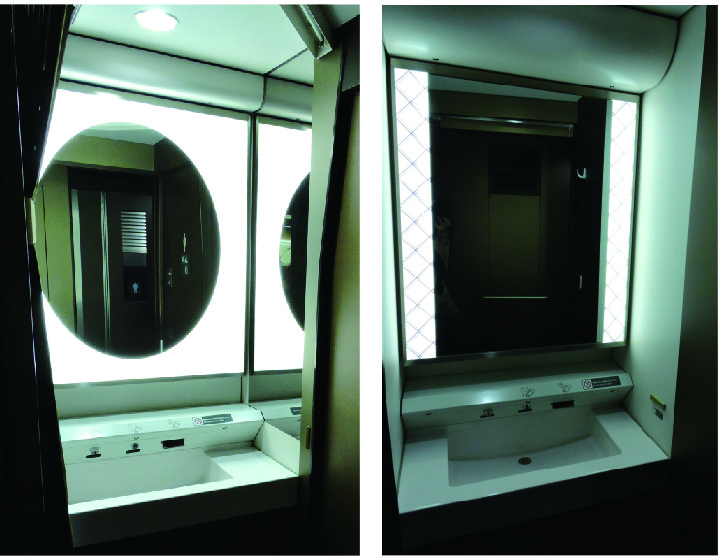
Wash stand between Gran and Green Class
On contrary, illuminance level inside the station is set quite high. The concourse is set at 700lx day and night, and over 1000lx inside the ticketing gate.
Our last spot to survey was Shinkansen interior at Gran Class, the highest class in the train. The interior is modern Japanese style and the base colour is terracotta.
The ambient lighting creates soft and relaxing ambient, and the linear lighting trimming window contours looked futuristic. The colour temperature was higher than expected, was 3200K. In a
Green Car, equivalent business class, was lower, 3000K, but the illuminance was lower, 50lx, in a Gran Class. The reading light for each seat sticking out from the backseat providing appropriate light when necessary and smoothly faded on/off. It was such a comfortable space in the car, and felt like spending a few more hours there.
The only negative point was the transition from the car to amenity space; the colour temperature changes to 5000K suddenly in the amenity area. it would have been better to keep it to 3200K or similar colour temperature to the car, to maintain the same ambient throughout the experience.
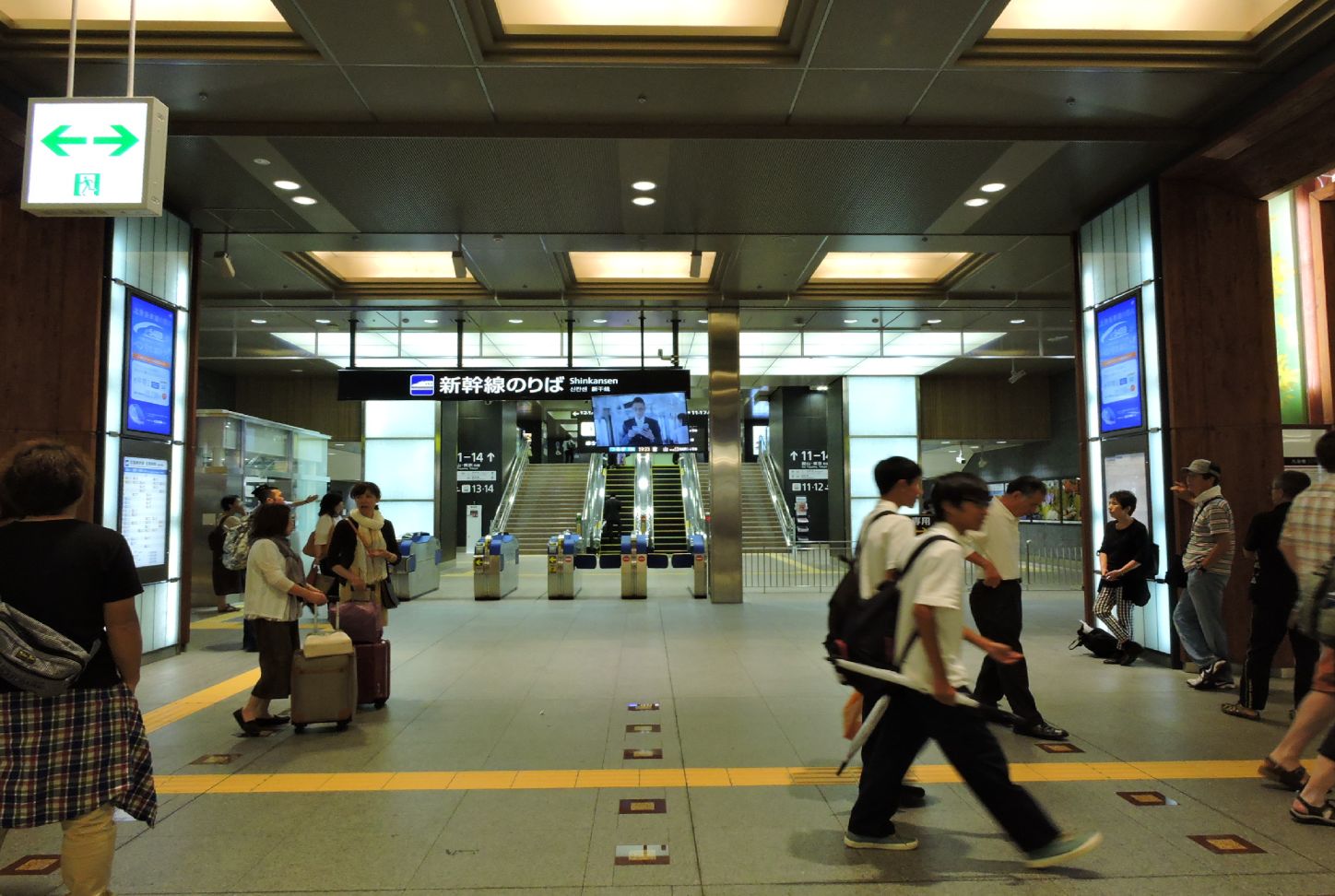
The color temperature clearly switches between concourse (front) and inside of latch (back).
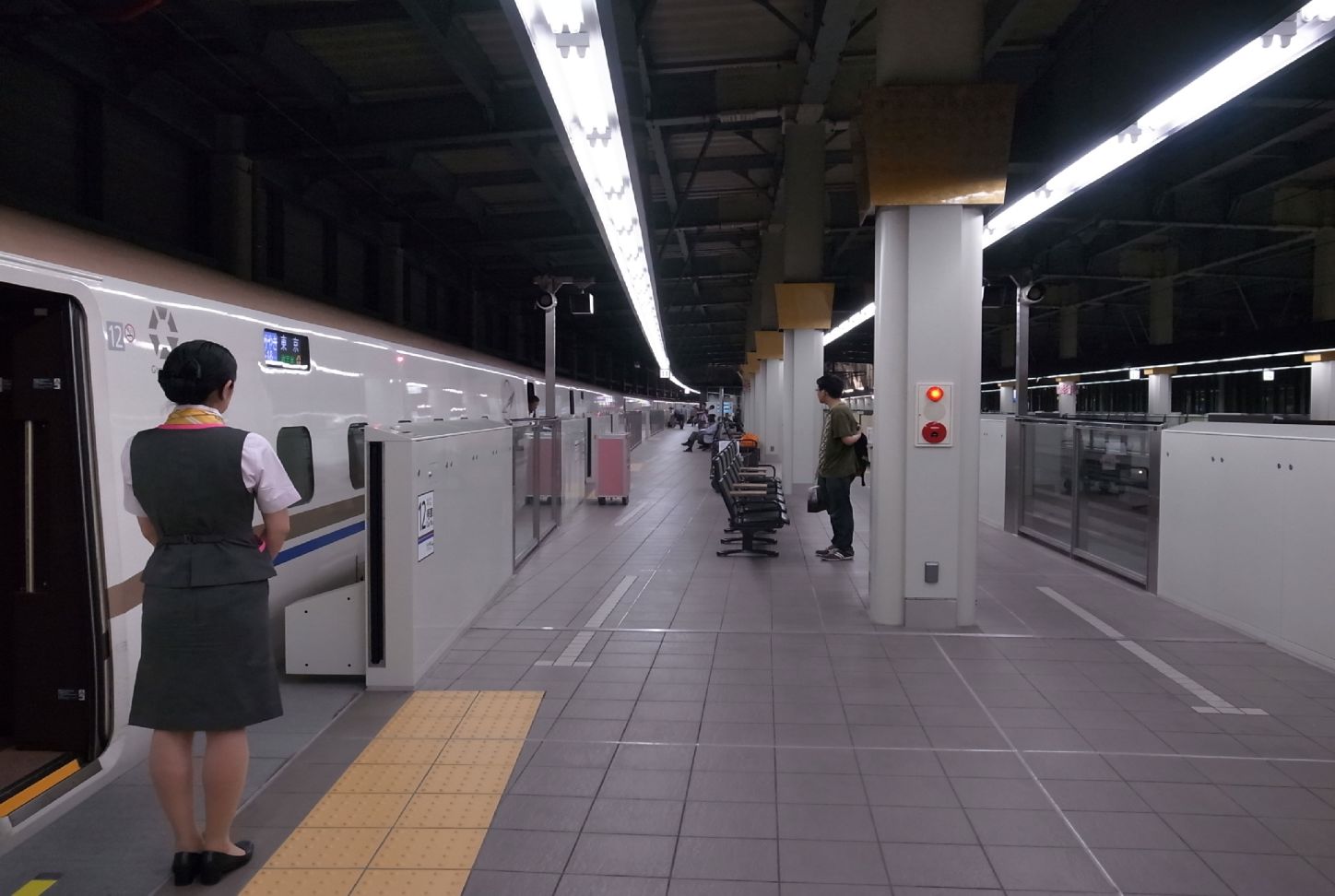
Extremely bright platform
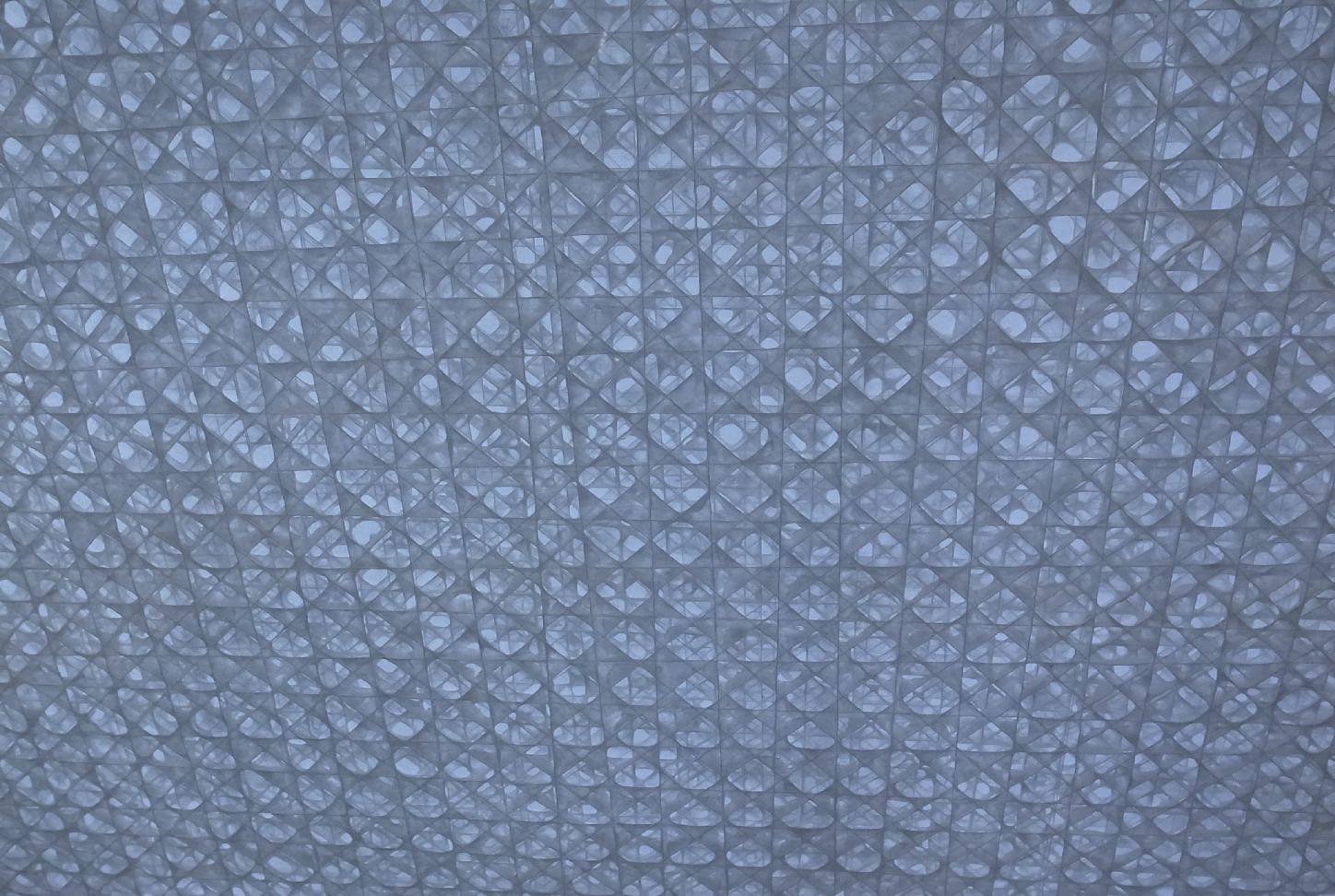
Washi is used for the light column at the entrance of the bullet train.
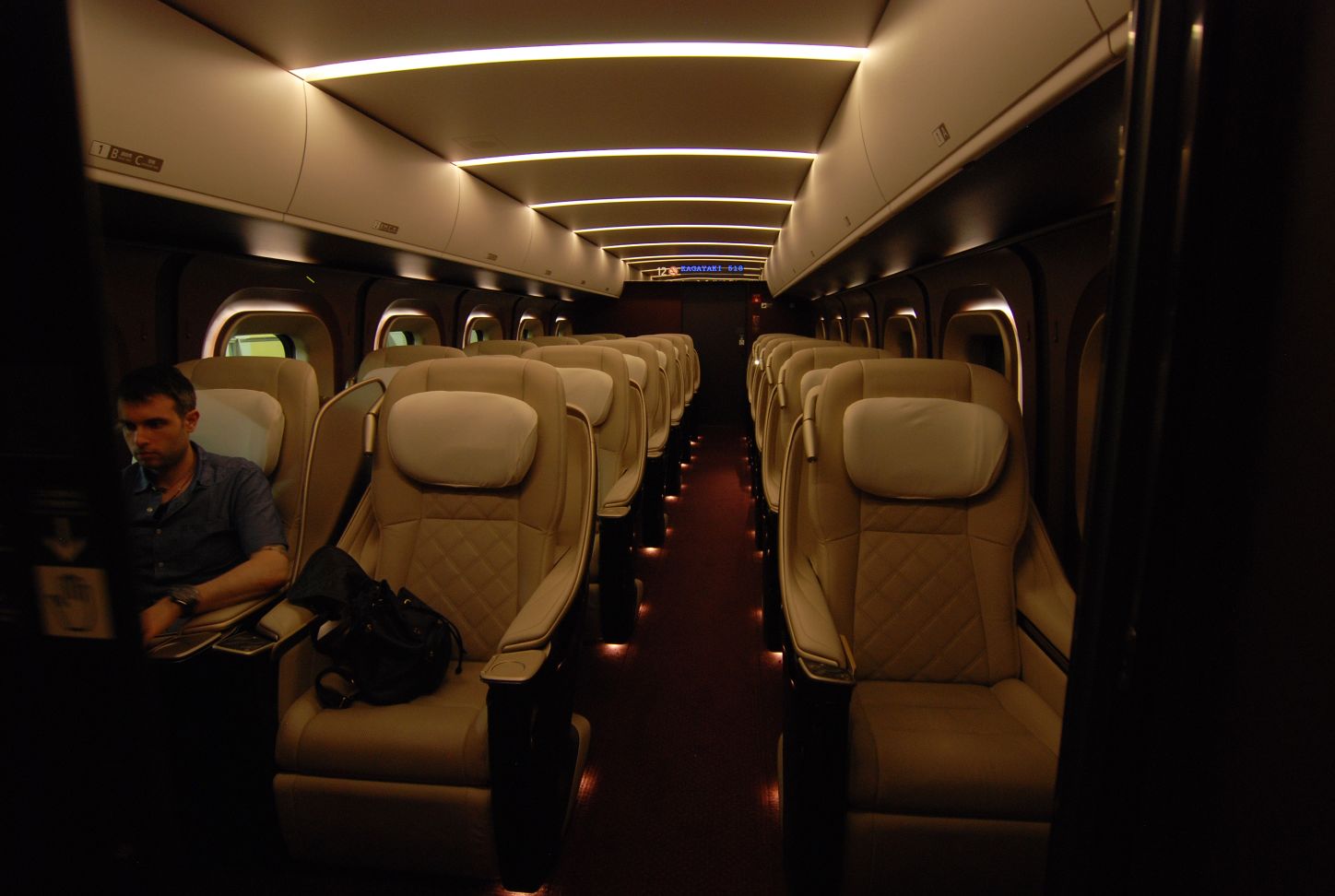
Inside of Glan Glass Cart. Because the interior color is reddish, the color temperature is 3200K.
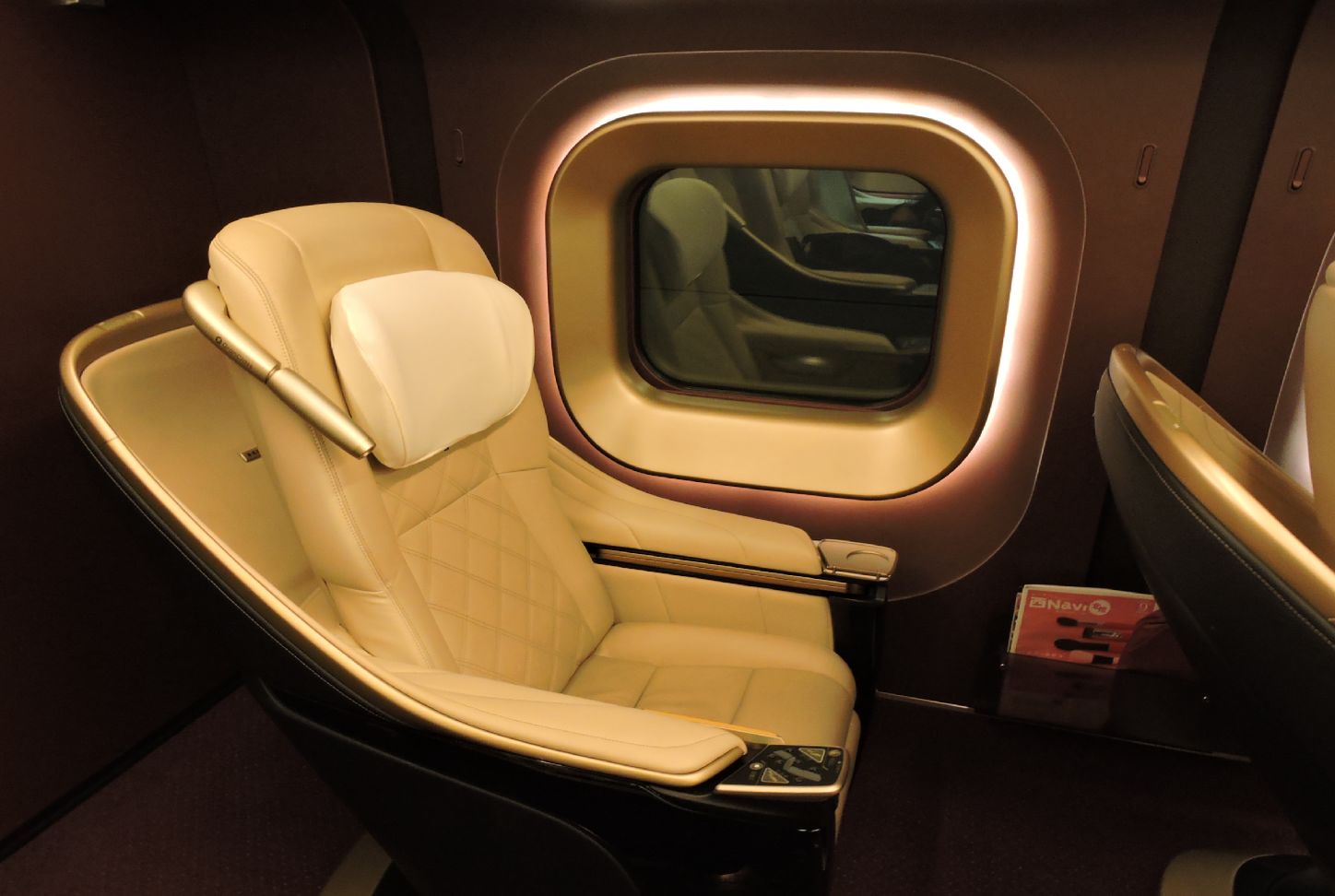
Seats of Glan class. Reading light is located next to head.
■Conclusion
There is an old saying about Kanazawa; always carry your umbrella, even forgetting to bring your lunch box”. As it tells, we never managed to see the clear sky during our survey trip, we expected to see more natural light though. Luckily, we appreciated the darkness and silence which we can hardly experience in Tokyo. Kanazawa has become a more exciting city compared to a few years ago, yet, it still maintains its own elegance as a castle town including the lighting environment in Chaya-machi and Kanazawa station plaza. It would be even better if the illuminance inside the station is lower. (Sachiko Segawa)
After spending nights in a minimum light in the village, I recognized amount of light equals to people’s activity in the evening. There were a lot of lightings in traditional Japanese style in Kanazawa as expected. Modern buildings made of glass, such as 21st Century of Modern Art Museum and Omotenashi Dome at the station, invert the impression of day and night by lighting and those also looked as elegant as traditional ones. It is exciting to witness the developing night scape in main touristic areas. (Yumi Honda)
Night City Walk in Osaka
~Finding “Naniwanese” Light~
03.OCT.2015 Tomoya Furukawa + Shinichi Sakaguchi + Satoshi Tamura + Yuka Tamano + Koki Iwanaga + Noriko Higashi
Osaka, the city of light and canals, has newly started developing under the key elements “Light and Water”. What kind of light attracts people? What is the challenge? Ten Tokyo members traveled to Osaka and had the City Night Walk with local members.
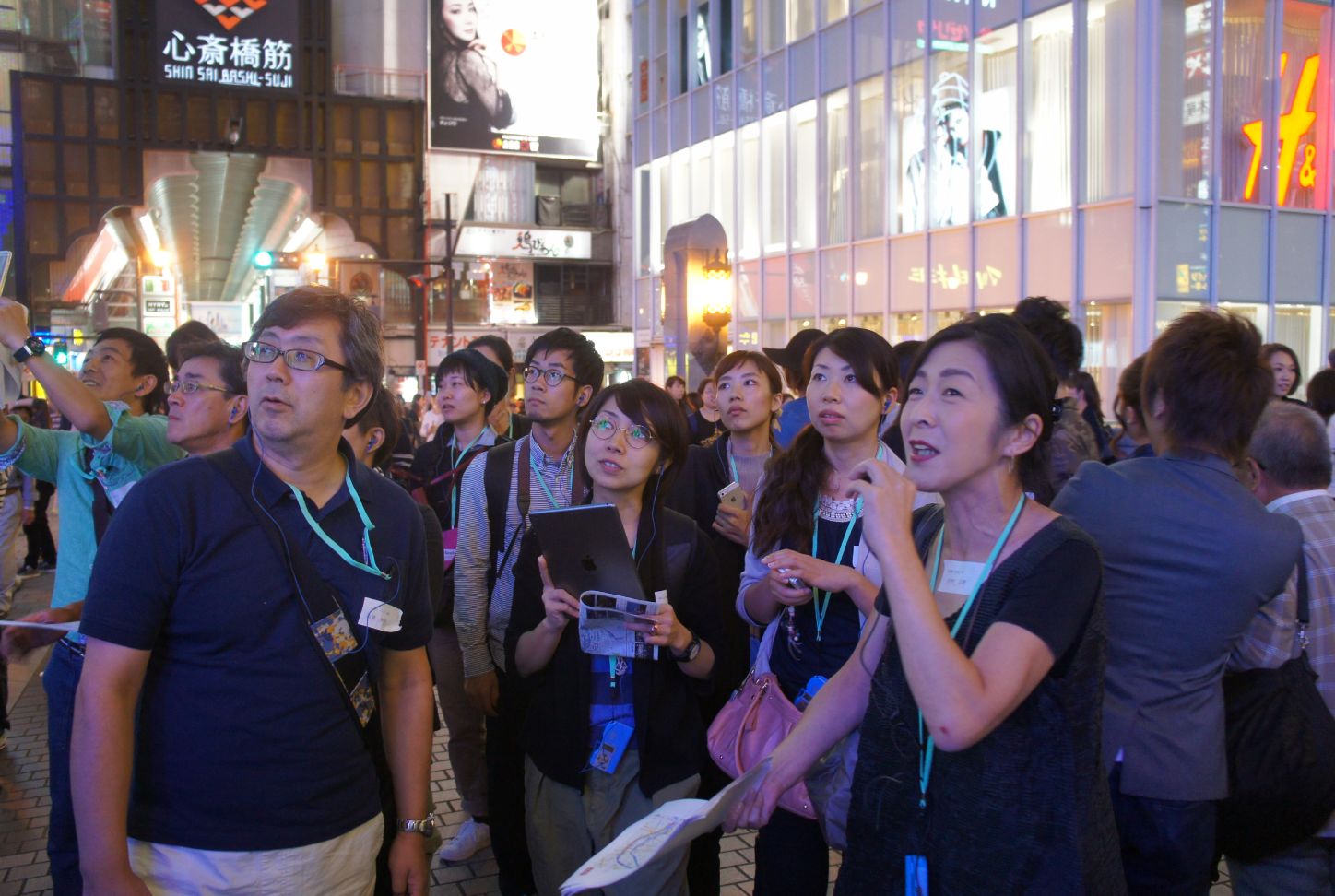
Nightwalk on very busy Friday night in Osaka
“Let’s organize a Night Walk in Osaka”, one member initiated the plan for this tour. What kind of light represents Osaka? What lights are the Heroes? How Osaka city develops its night scape? First of all, I would like Osaka members to experience the City Night Walk. How do Tokyo members observe the night scape in Osaka? Ten Tokyo members traveled to Osaka and joined 28 local members, and started walking in bustling Friday evening. (Shinichi Sakaguchi)
■Orientation
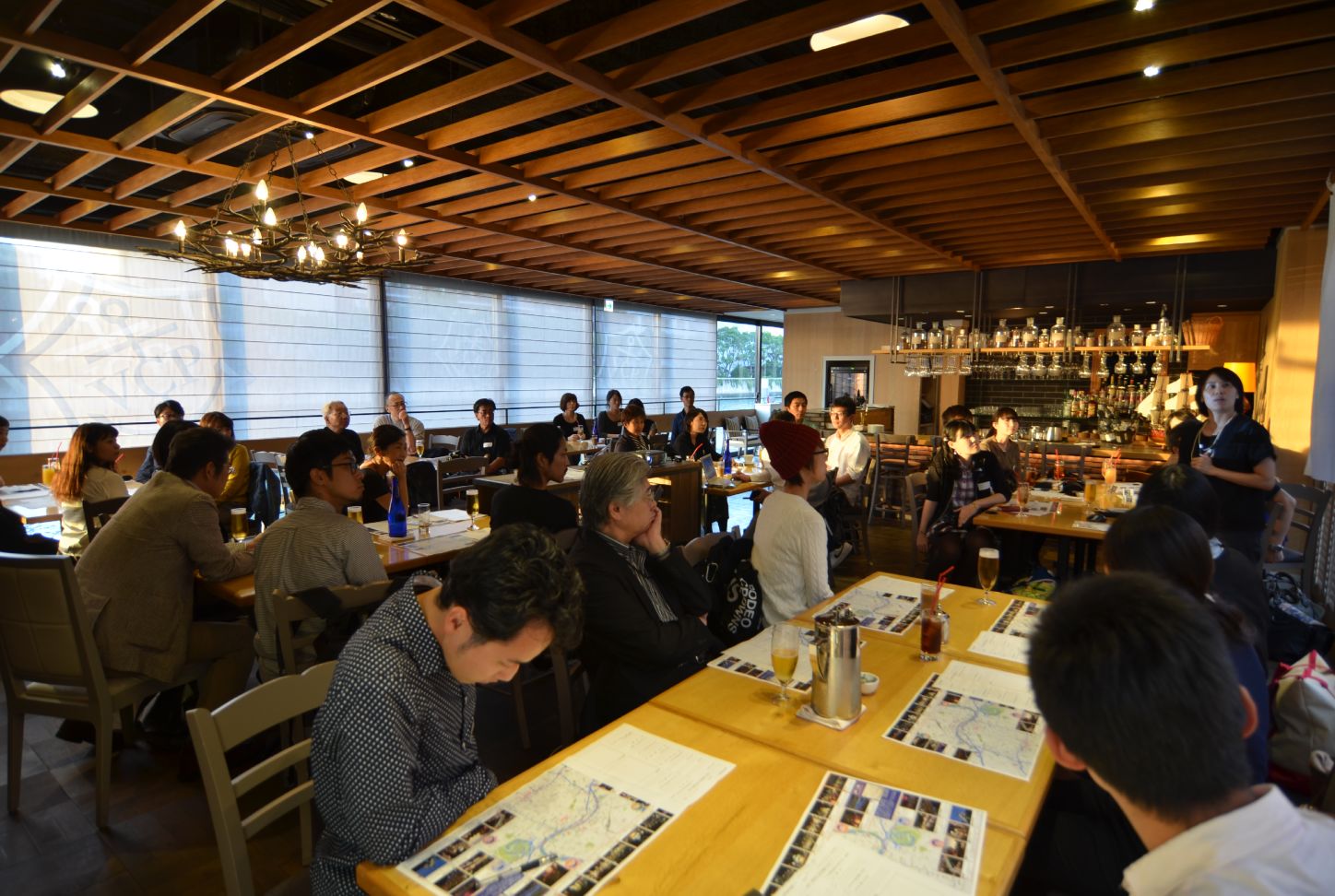
Orientation Venue
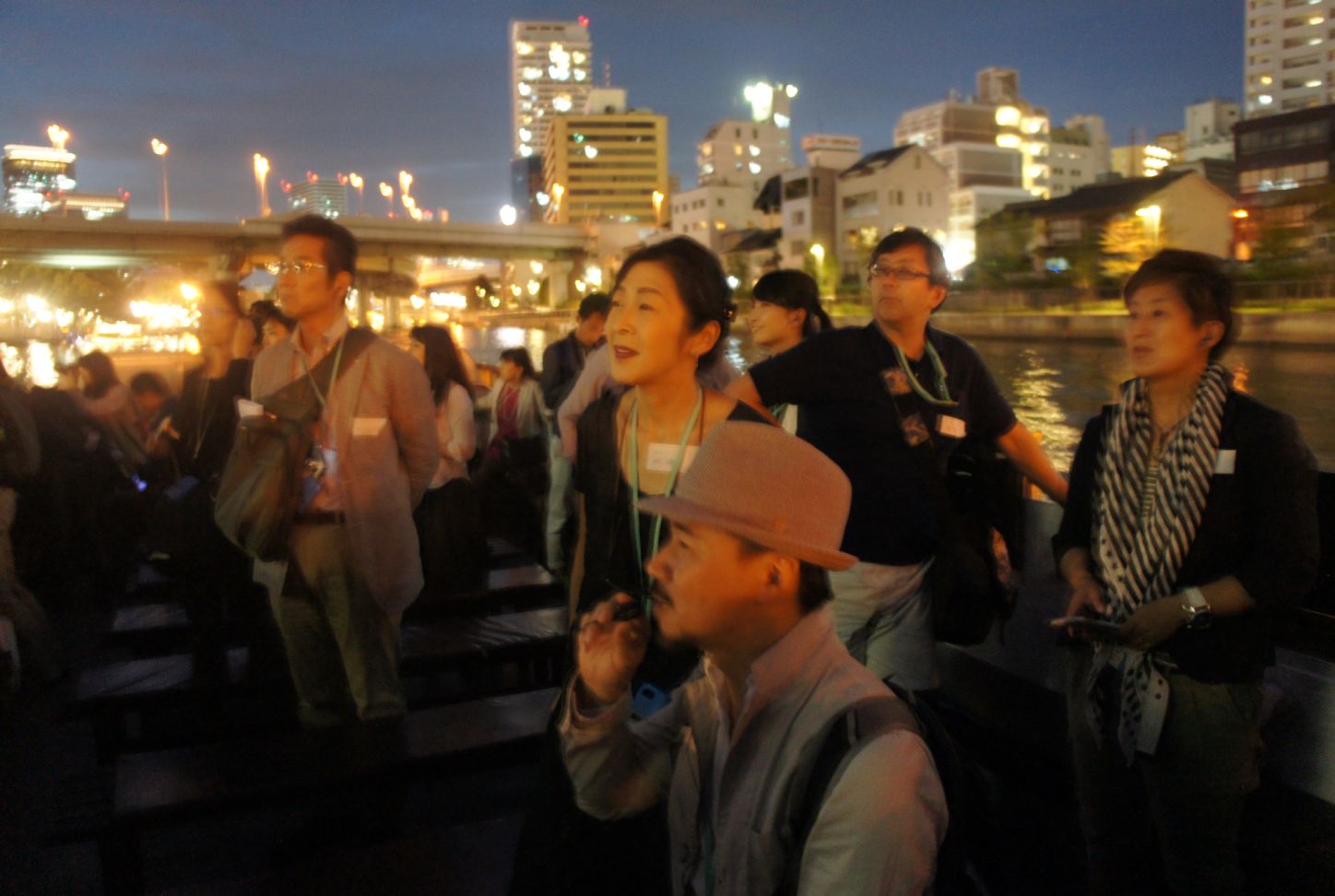
Detective Member, Tanaka, explains the lighting at the river

From the river, we can observed how is Nightscape in Osaka.
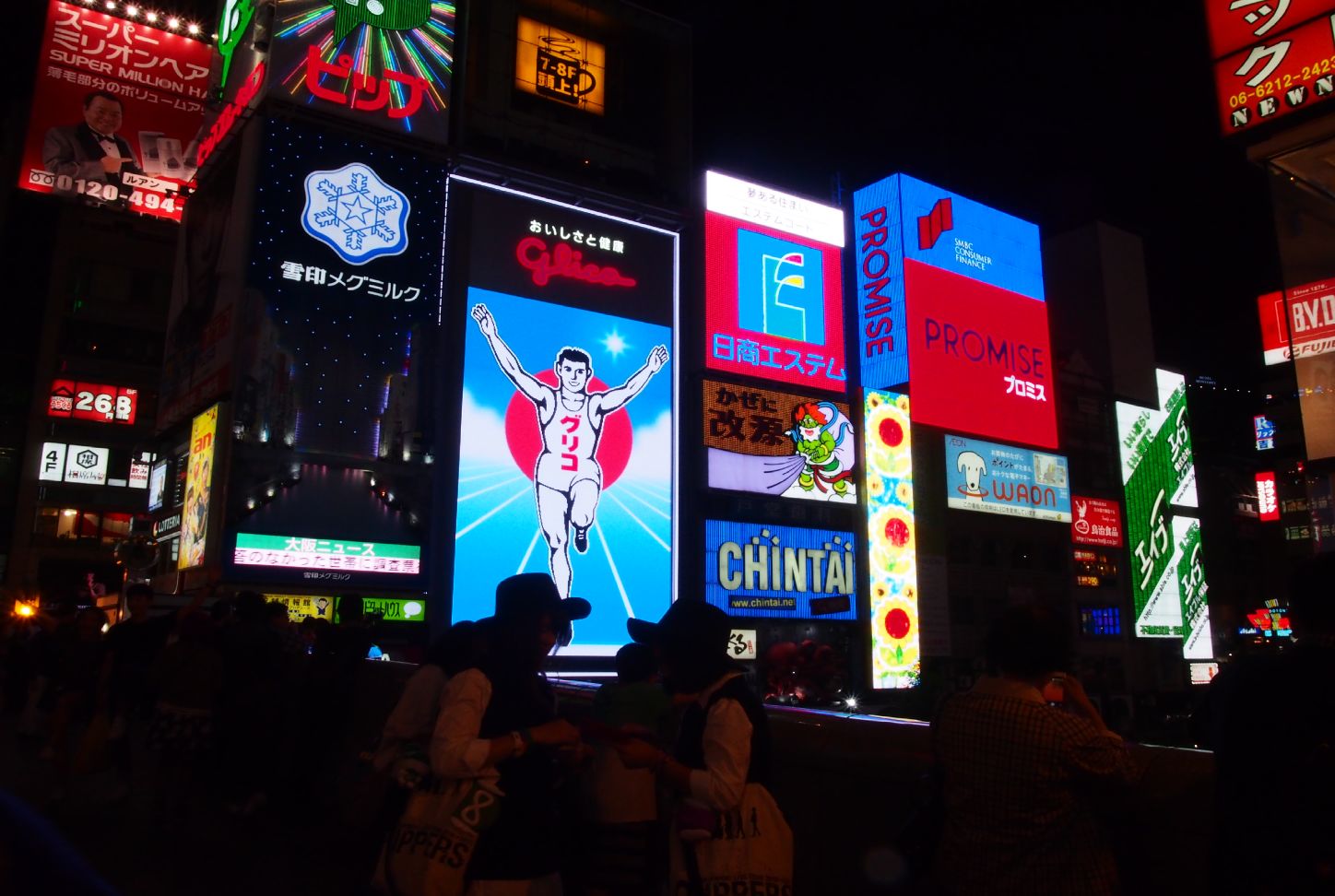
Talking about Nighscape in Osaka, the most iconic one is Signage of Glico
Orientation was held at a café in Nakanoshima Banks building. Local members looked enthusiastic, as those busy barely have a chance to travel and join the walk in Tokyo. After Mr. Mende, the leader’s opening address, Mr. Tanaka introduced the city lighting planning, which Osaka municipality has been working on. The local lighting designer, Ms. Nagamachi, explained the route of the walk and the members looked excited to see something new.
The members were divided into two teams; one with members from the East (Tokyo area) being led by Ms. Nagamachi, and the other from the West (Osaka area) being led by Mr. Mende. Would members from the East and the West perceive the lighting differently? (Kouki Iwanaga)
■Doujima-Ohashi to Temman Bridge
Departed at the foot of Doujima-Ohashi, we headed upstream along Nakanoshima by an excursion boat. Each bridge on the way was lit up beautifully and we enjoyed the features in the city of canals. Even columns lifting the express way were illuminated nicely. My favorite light here was the light shining the waving water surface; the reflected lights were just beautiful and heartwarming. Seeing the light from the river was such exciting and great experience! (Satoshi Tamura)
■Doutonbori area
Driving down to the south by taxi, next destination was Doutonbori. Glico’s ad, which is one of the faces of Osaka, has renewed to LED media ad. Members from the East positively received it featuring Osaka, while most of local members complained that they liked former one.
All the shops and restaurants along Doutonbori River was faced to the river, and it seemed that the river and people were closely related. People were gathering in the lighting placed everywhere along the river, and it created the jovial environment.
Gas lamps were found at Hozenji temple. However bright spotlights placed at the neighbor spoiled the elegance of traditional light. Traditional red lanterns were found at Yokocho and Roji (ally) and it also created a nice ambience. (Yuuka Tamano)
■Shinsekai and Tobitashinchi
Tsutenkaku, Osaka’s landmark tower, was the Hero; dressed in colour changing LED which also play a role to be four-sided ad. Only thing to point out was that dots of light source were reflected on the mural painting. On the other hand, the colour temperature, allocations and the appearance of signage lighting and street lighting in Tobitashinchi were quite uniform. The uniformity of warm lighting zone was something unique of this area.(Tomoya Furukawa)
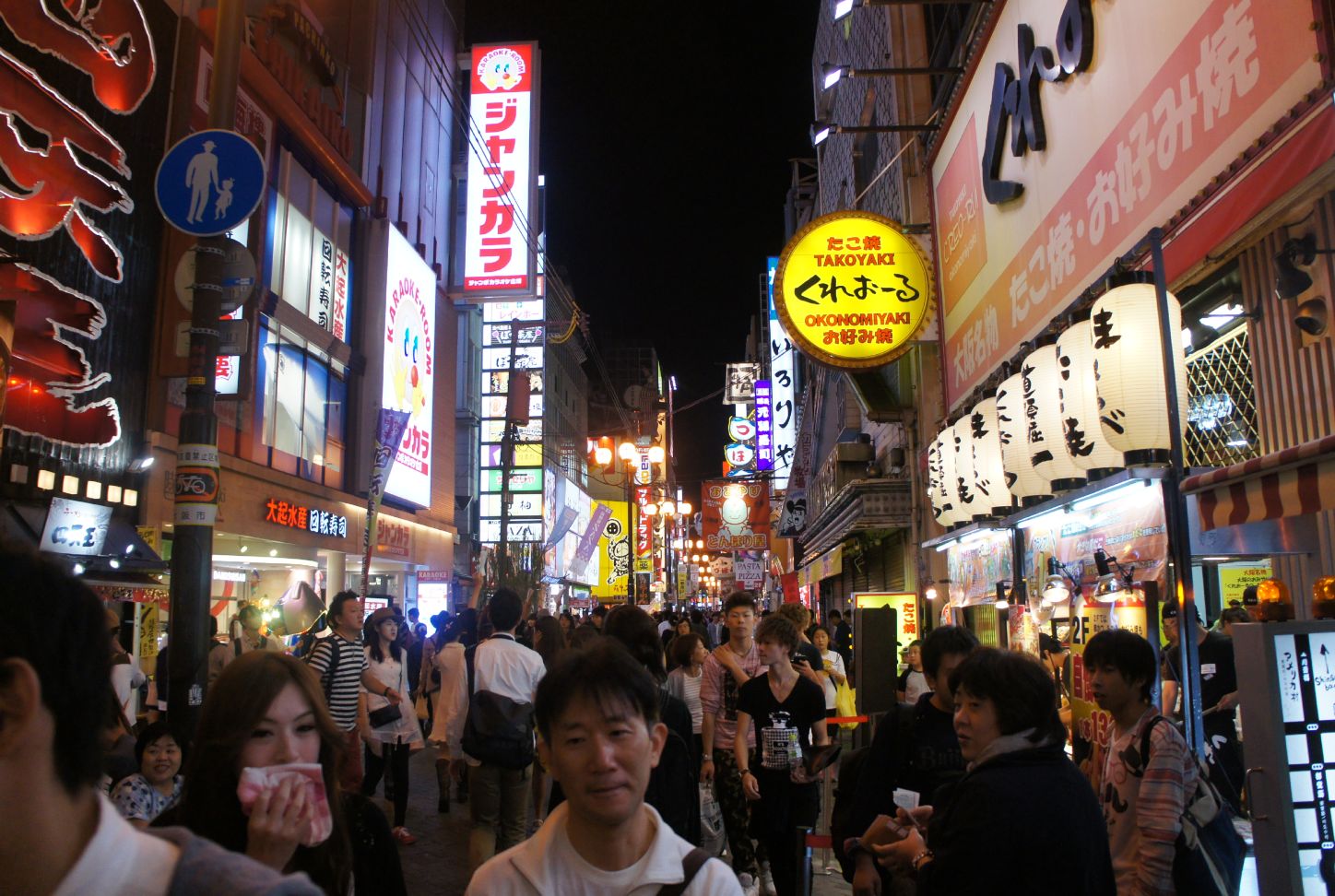
Many different kinds of signage create festive atmosphere in the area
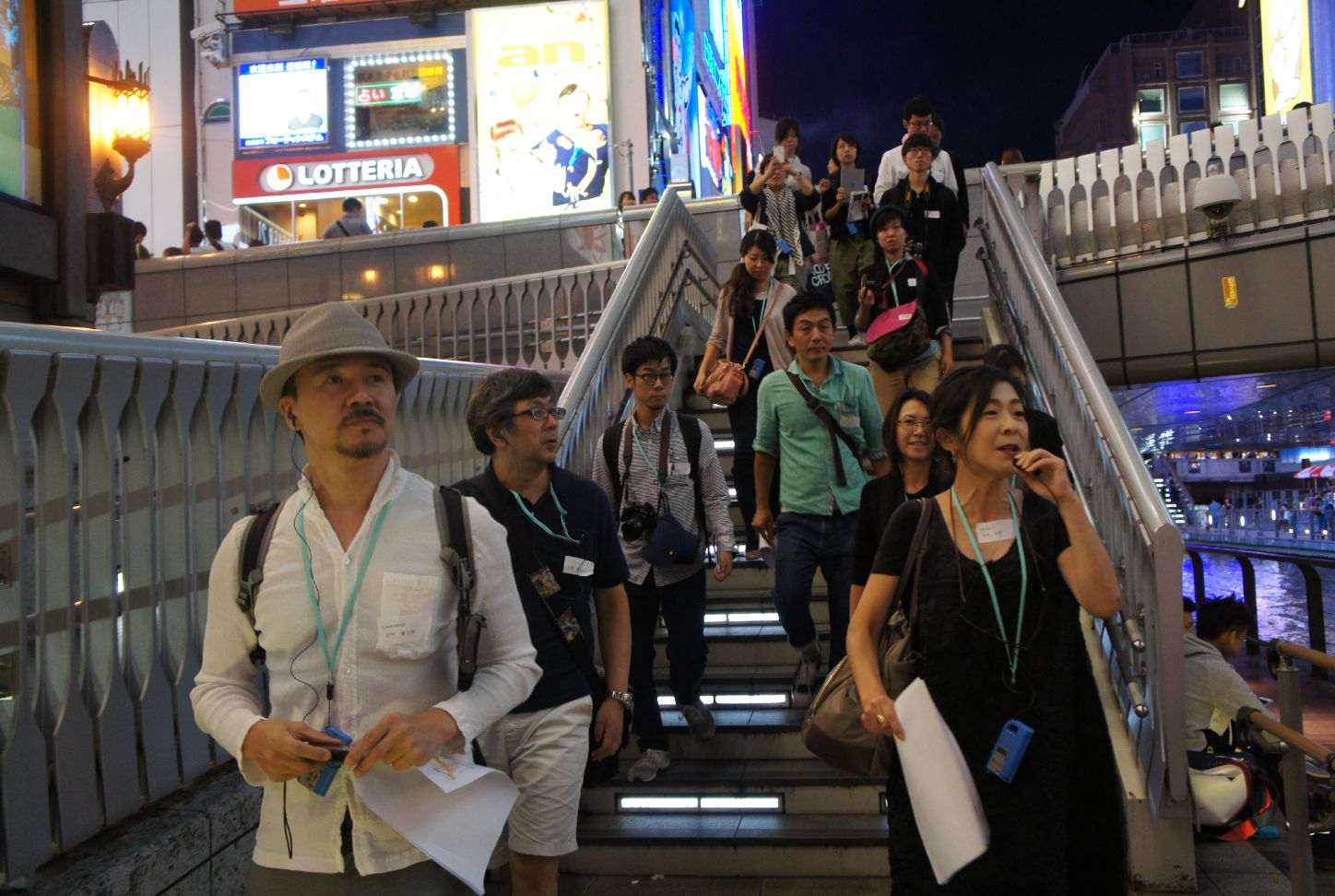
Nightwalk was carried out with Ms. Nagamachi’s guide.
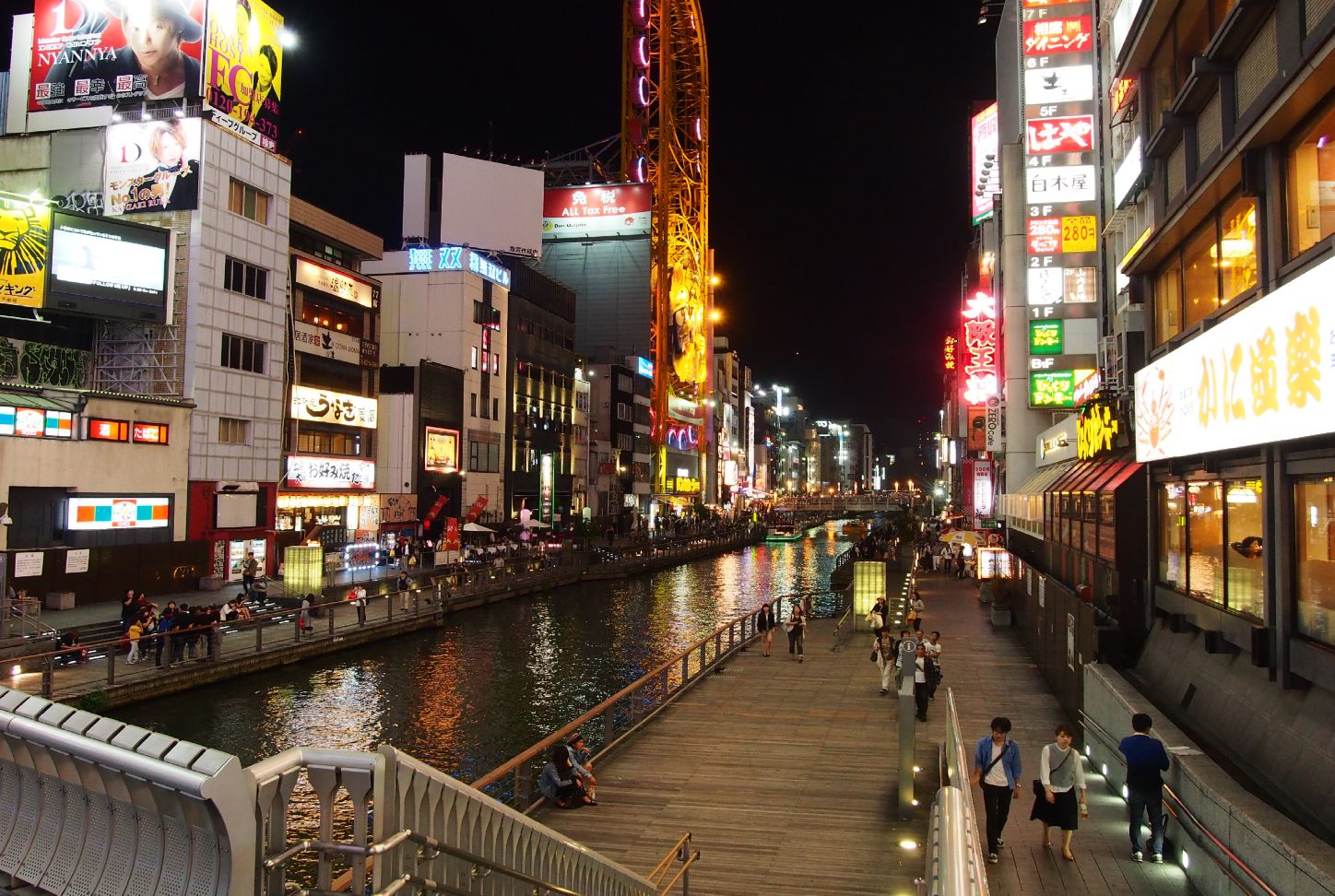
Every store faces to a river, and it seems water and people are closely related.
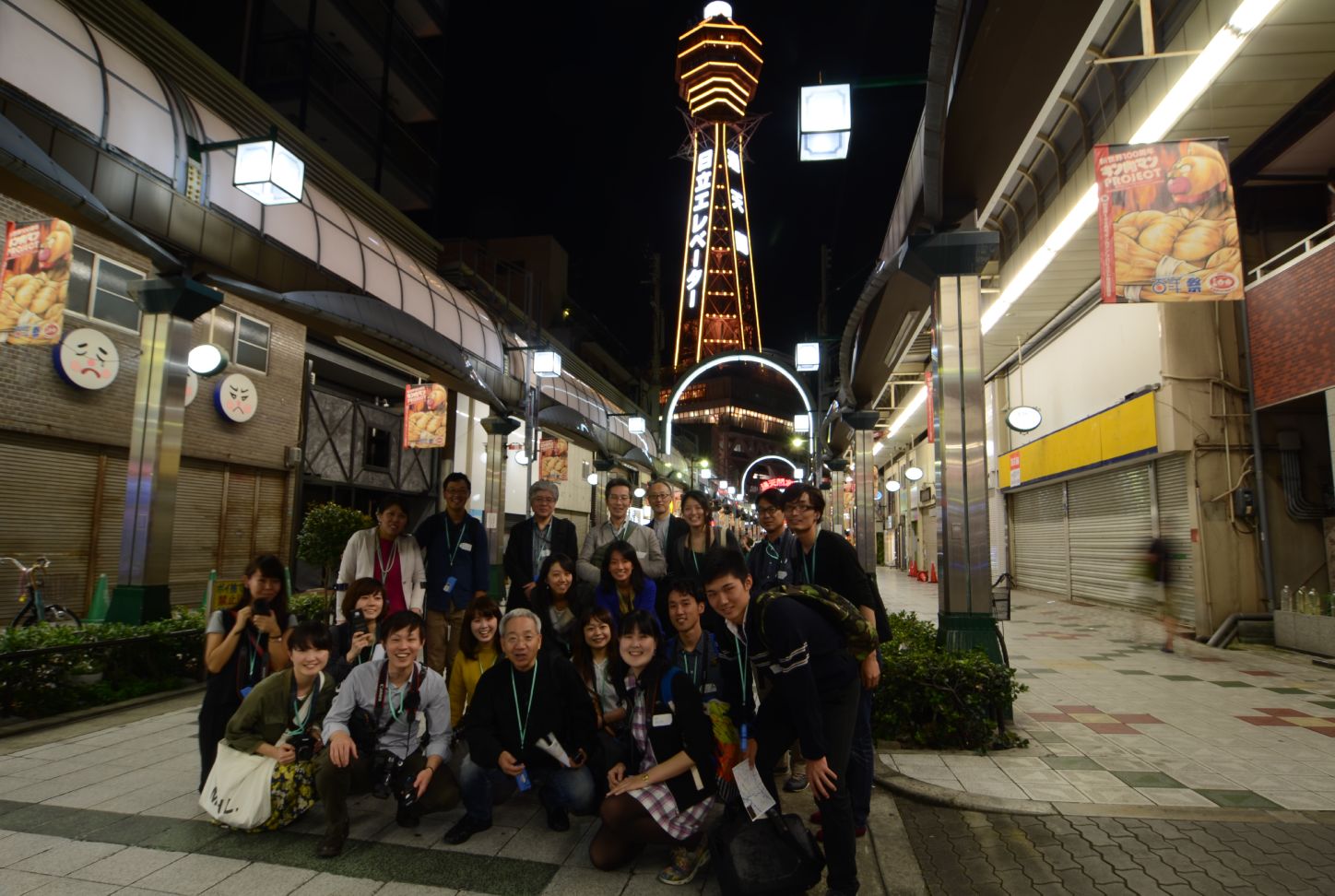
Tsutenkaku
■Dinner Gathering –Presentation of Hero and Villain for Each Team
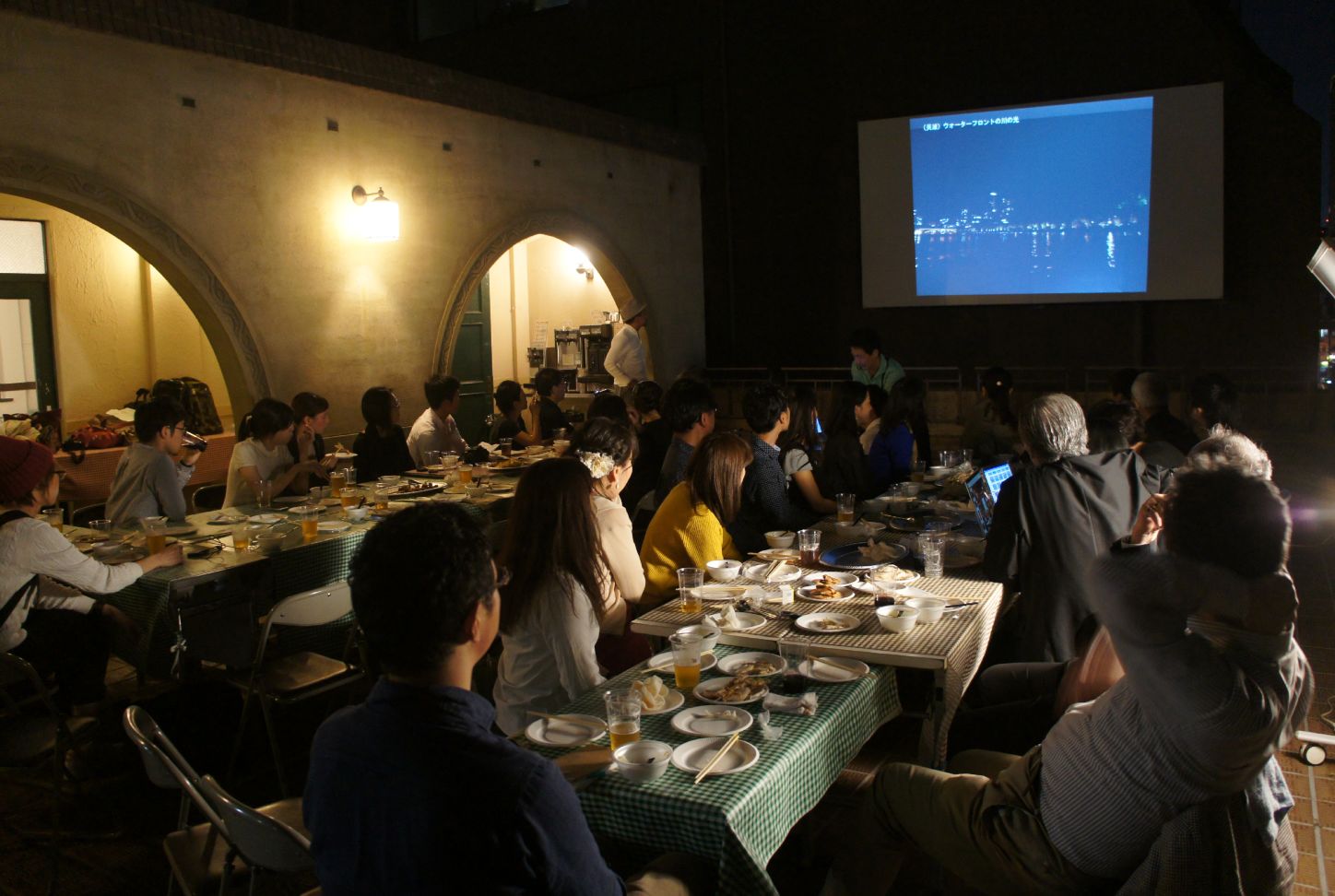
The dinner gathering was organized after City Night Walk, at the terrace in Shibakawa building which represents Osaka’s modern architecture. The outdoor space was the perfect place for the casual discussion. Each team had picked up five Heroes and Villains from what they had seen, and introduced to all. Dividing the team by the East and the West seemed successful; introduced Heroes and Villains were totally different. The best Hero picked by East members was Glico ad. This iconic ad looked well-symbolizing Osaka style for the East team. The worst Villain was the high-luminance security light. West team selected the lanterns and signage lightings uniformly planned in Tobitashinnchi as the best Hero. The worst Villain was the same as East team. It clarified the problem of the security light, which has been changed to high luminance LED all over Japan.
It was a long evening, walking and discussing a lot, and the event was fruitful as we received a lot of positive comments after the event.(Noriko Higashi)





